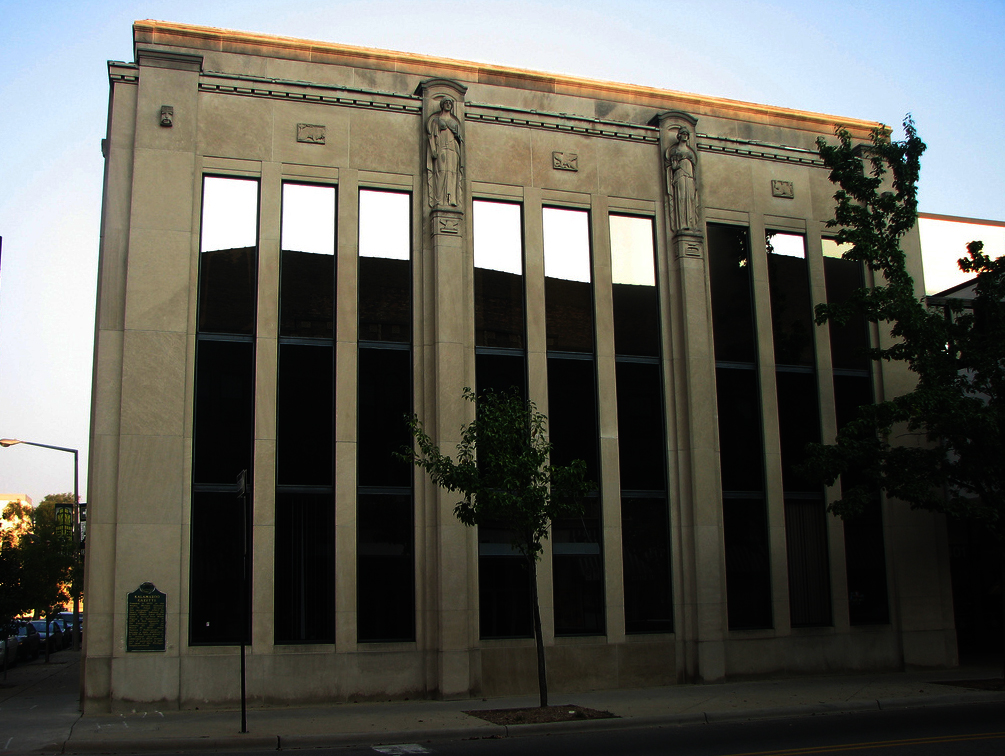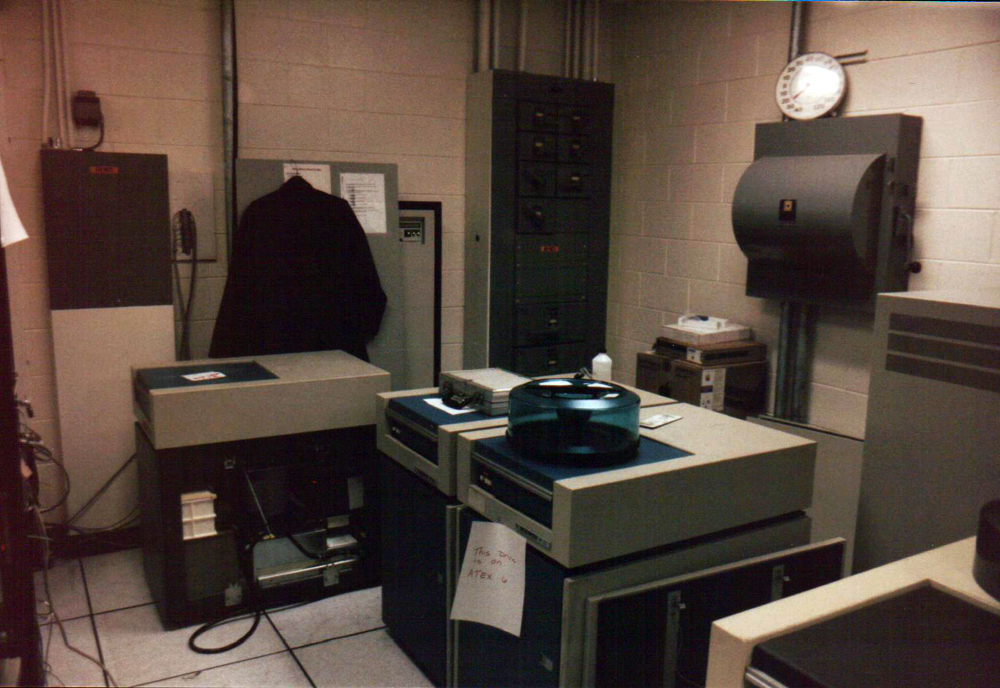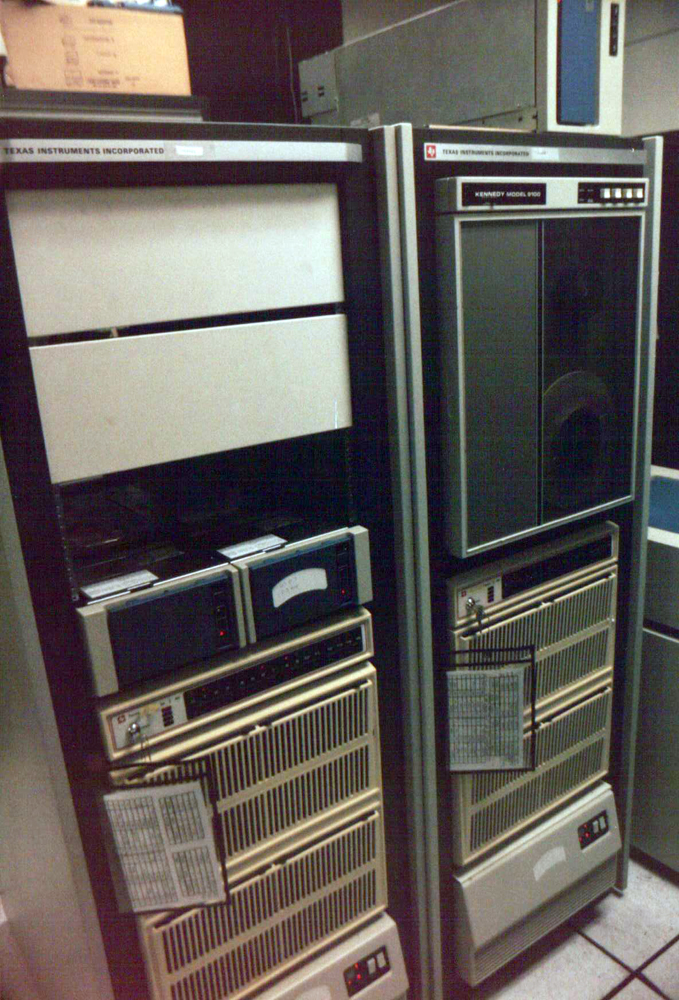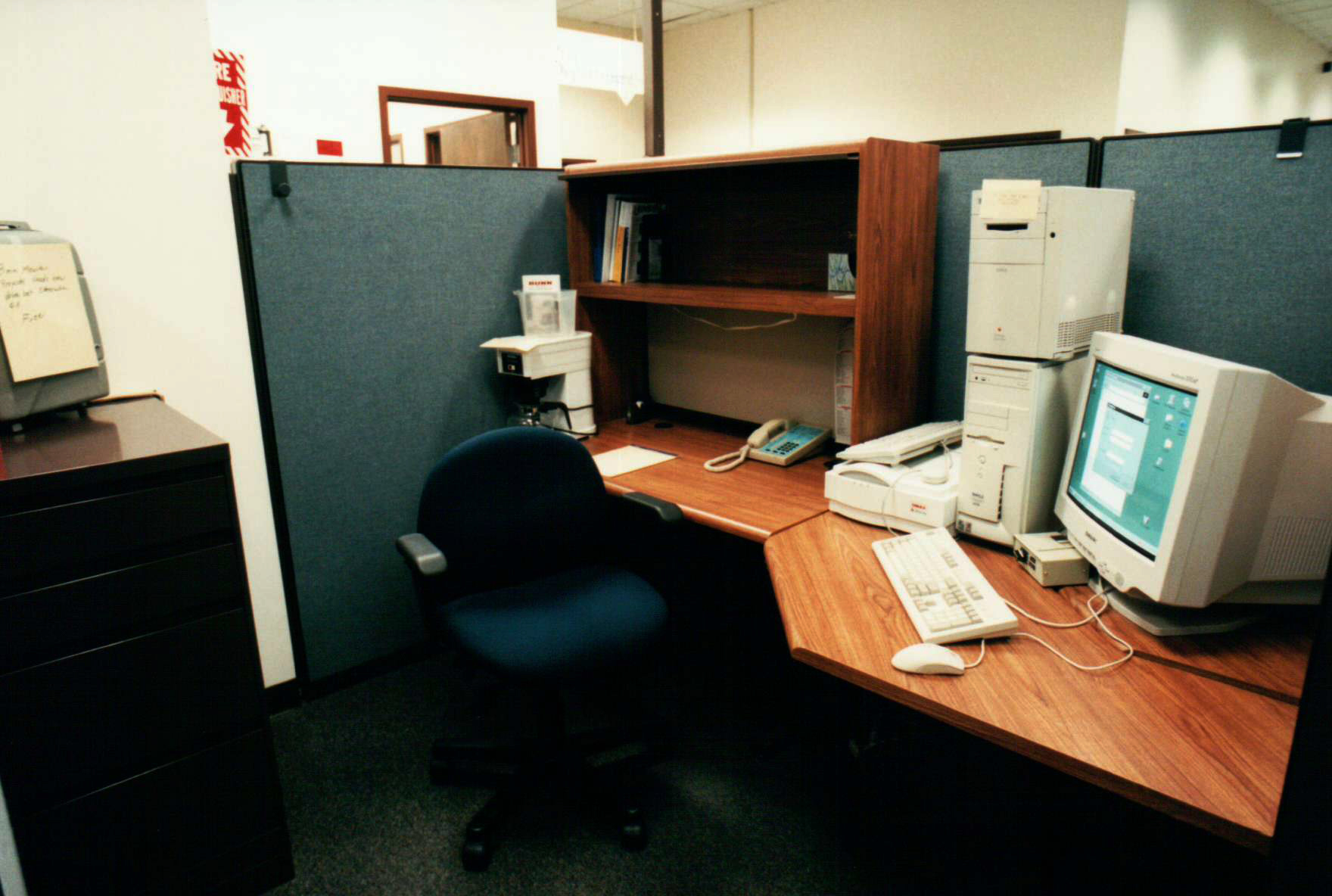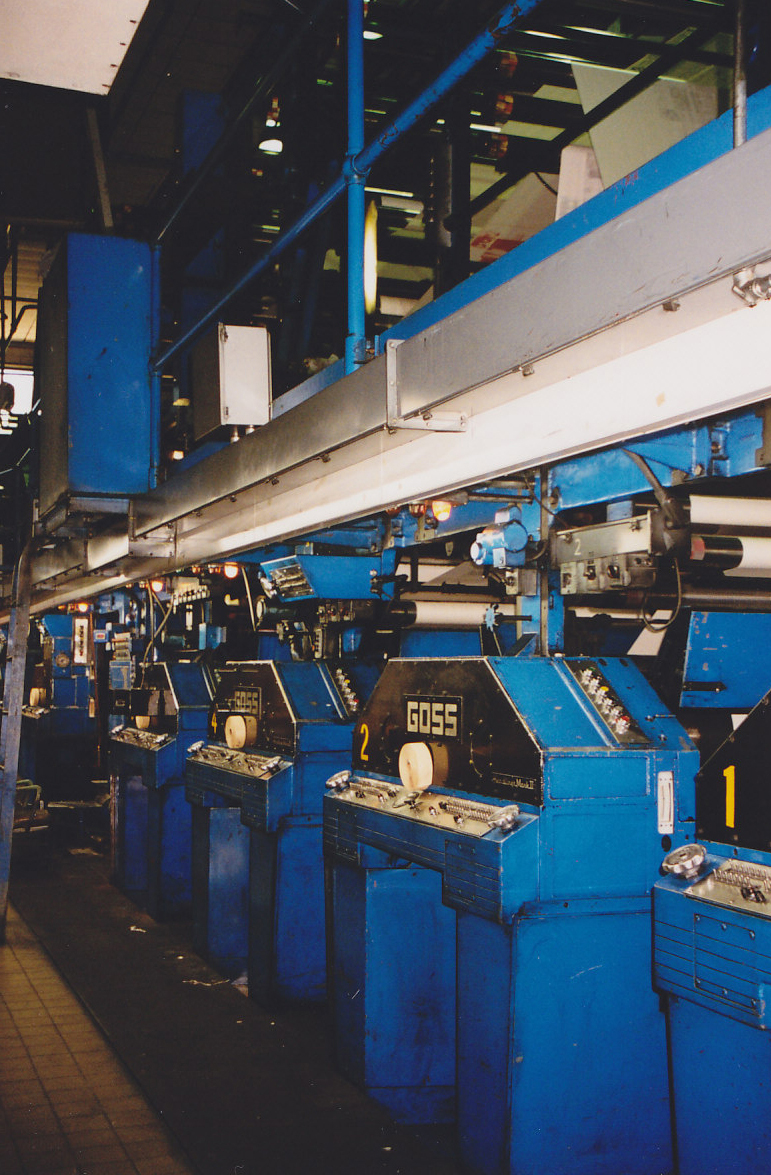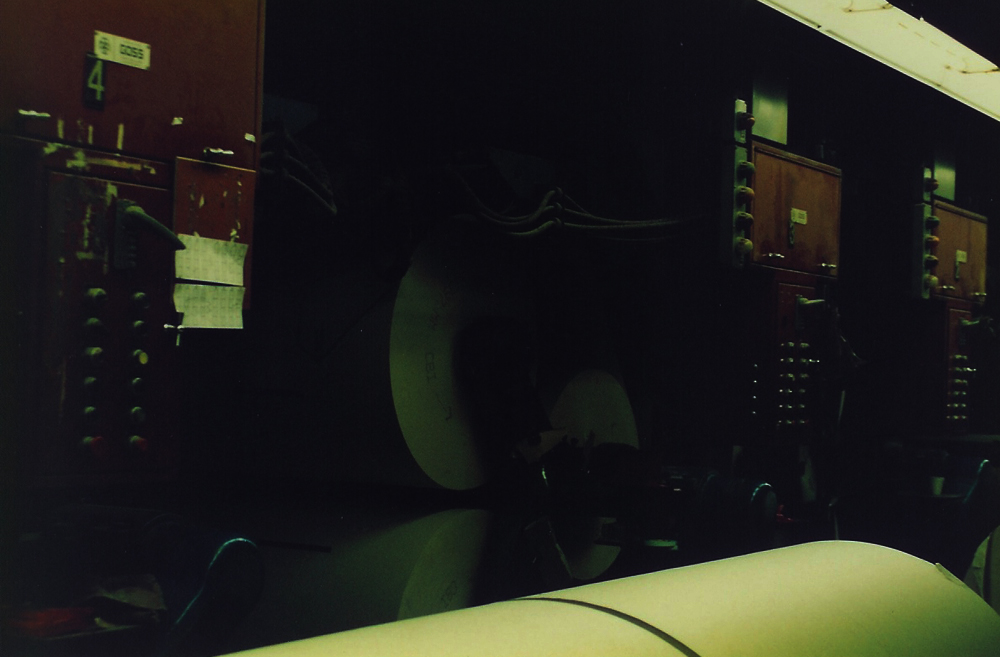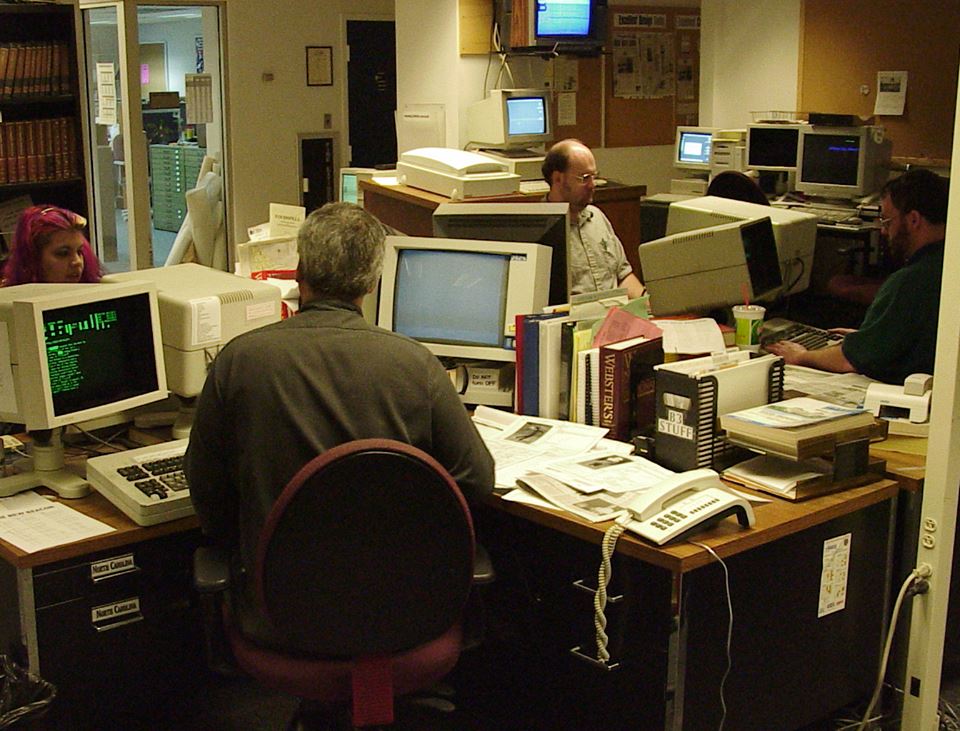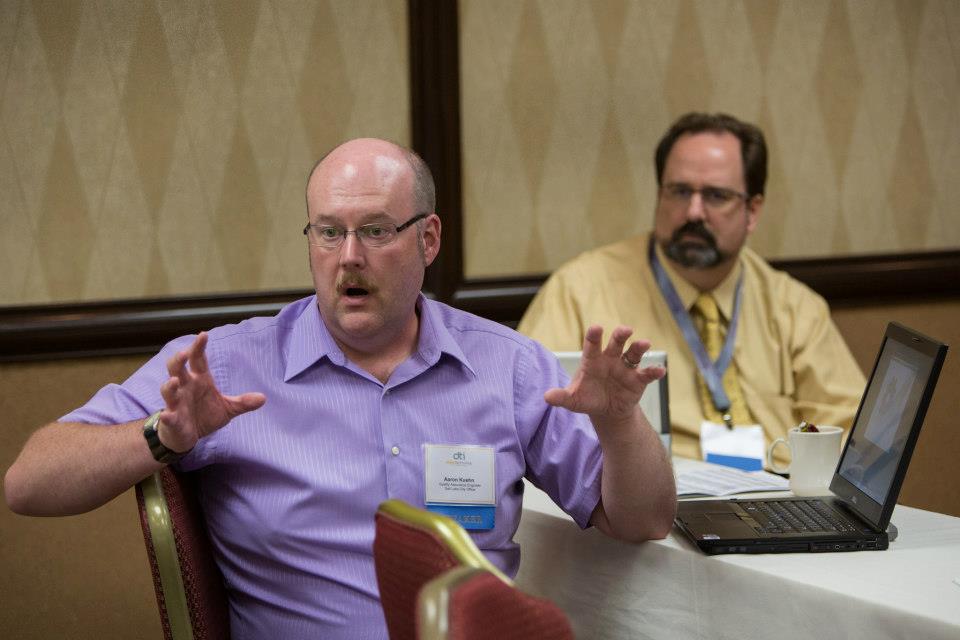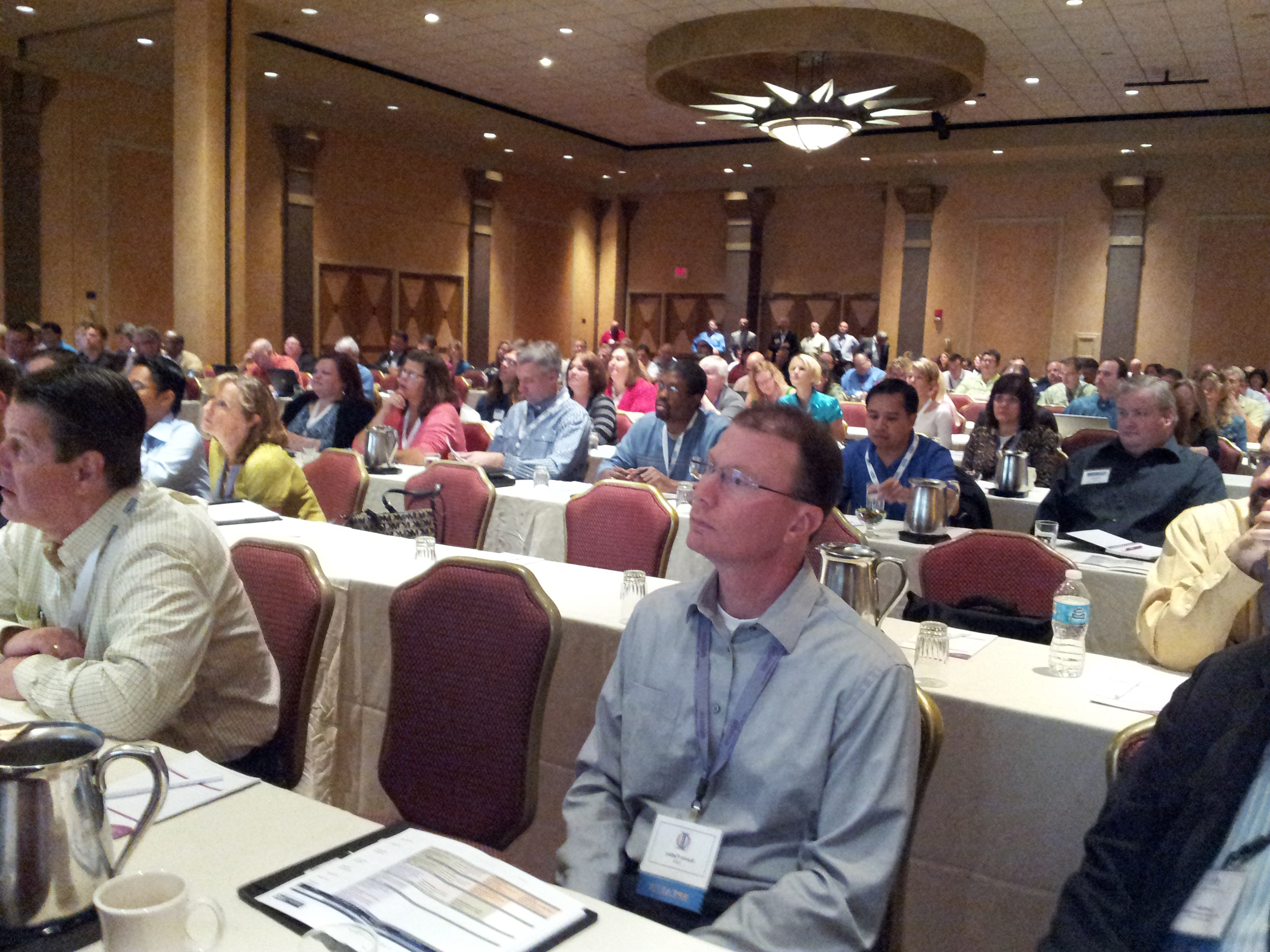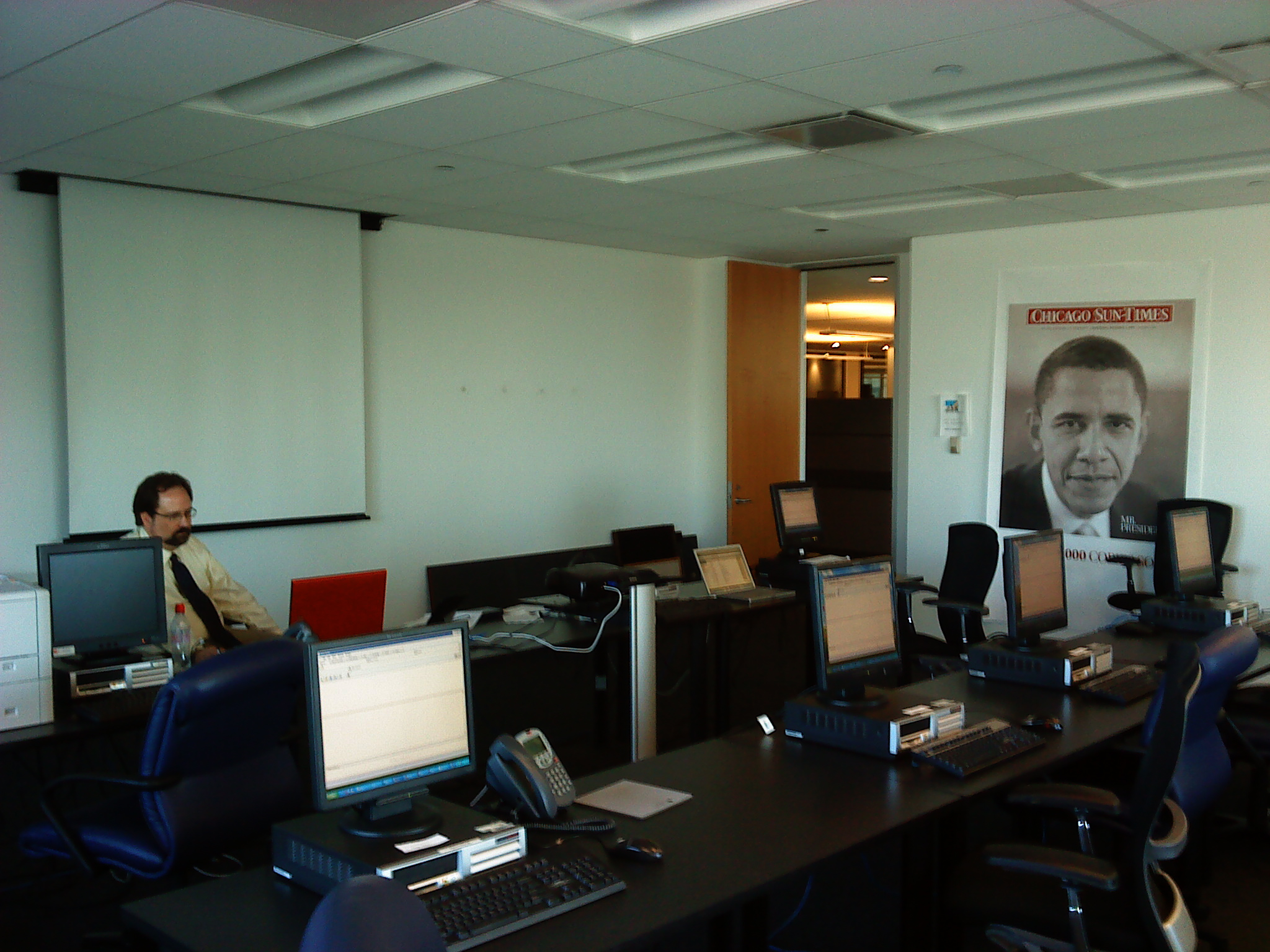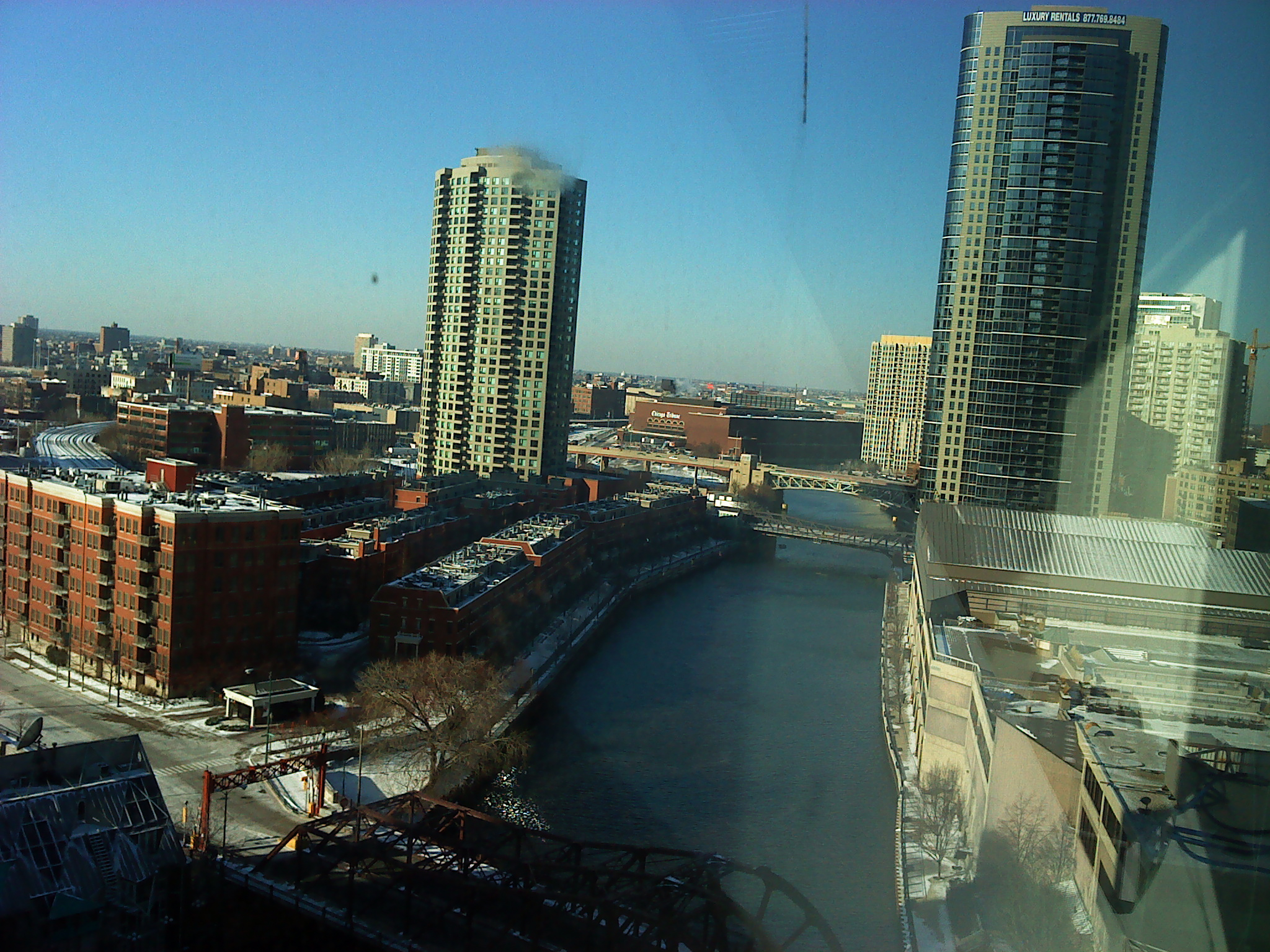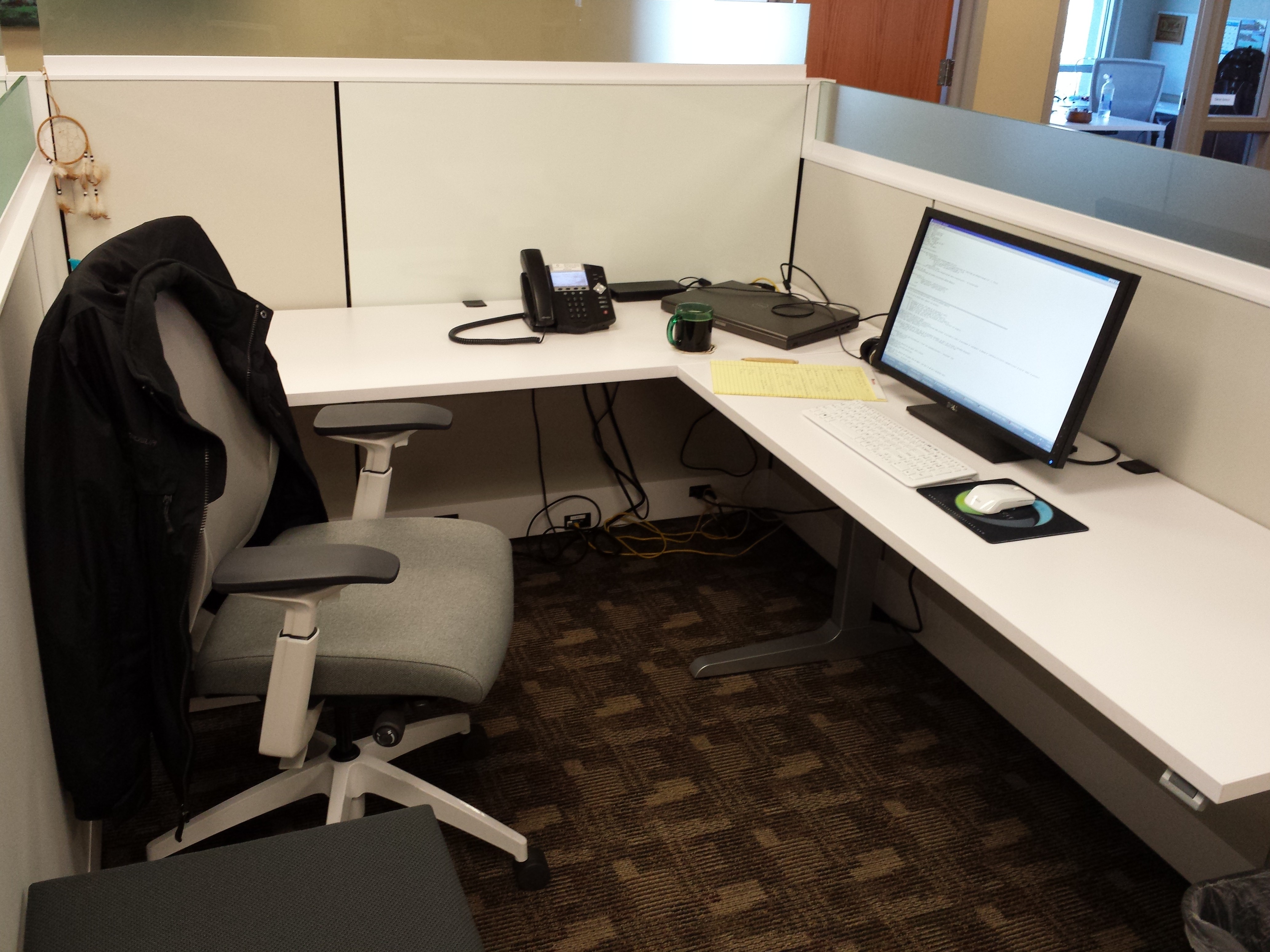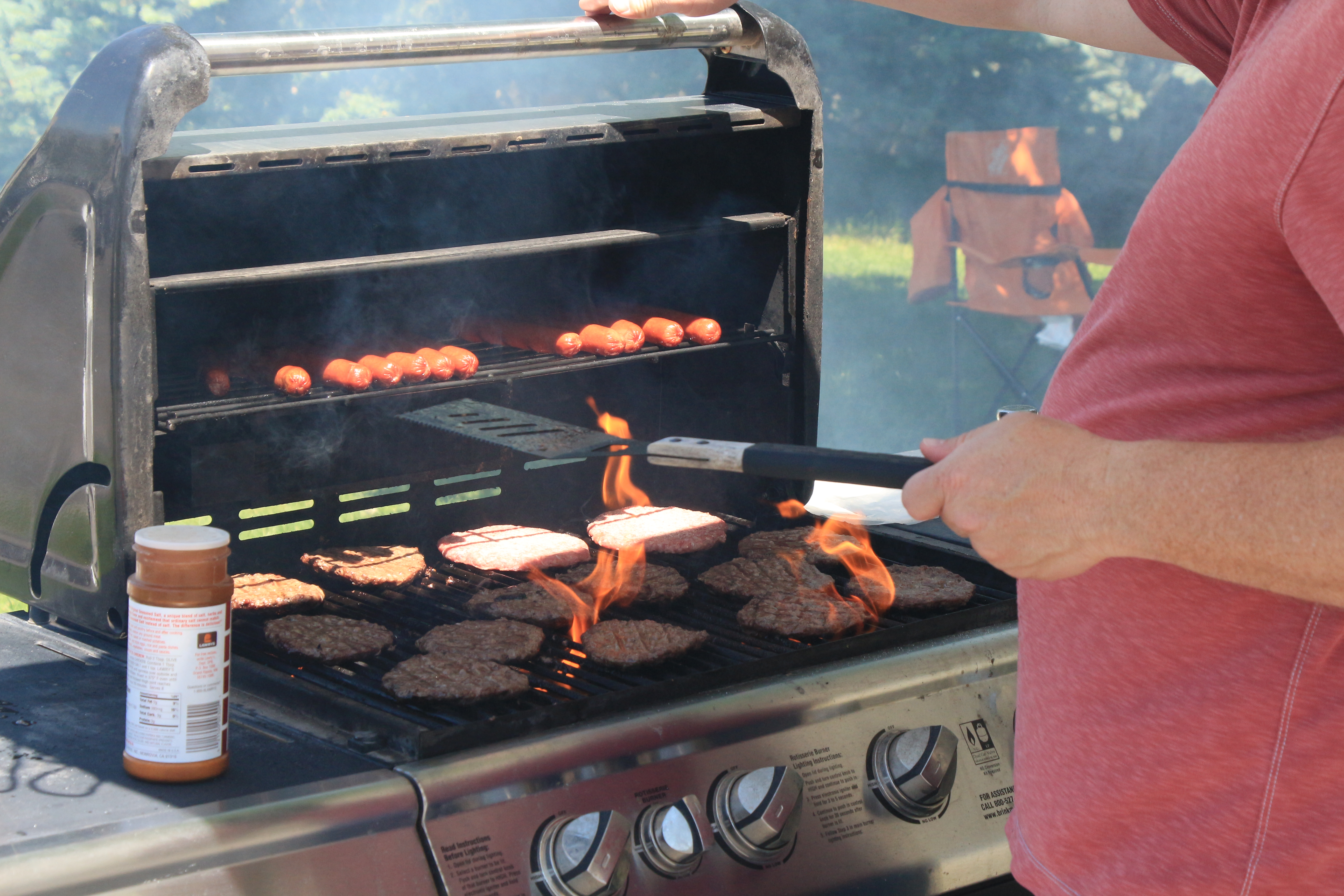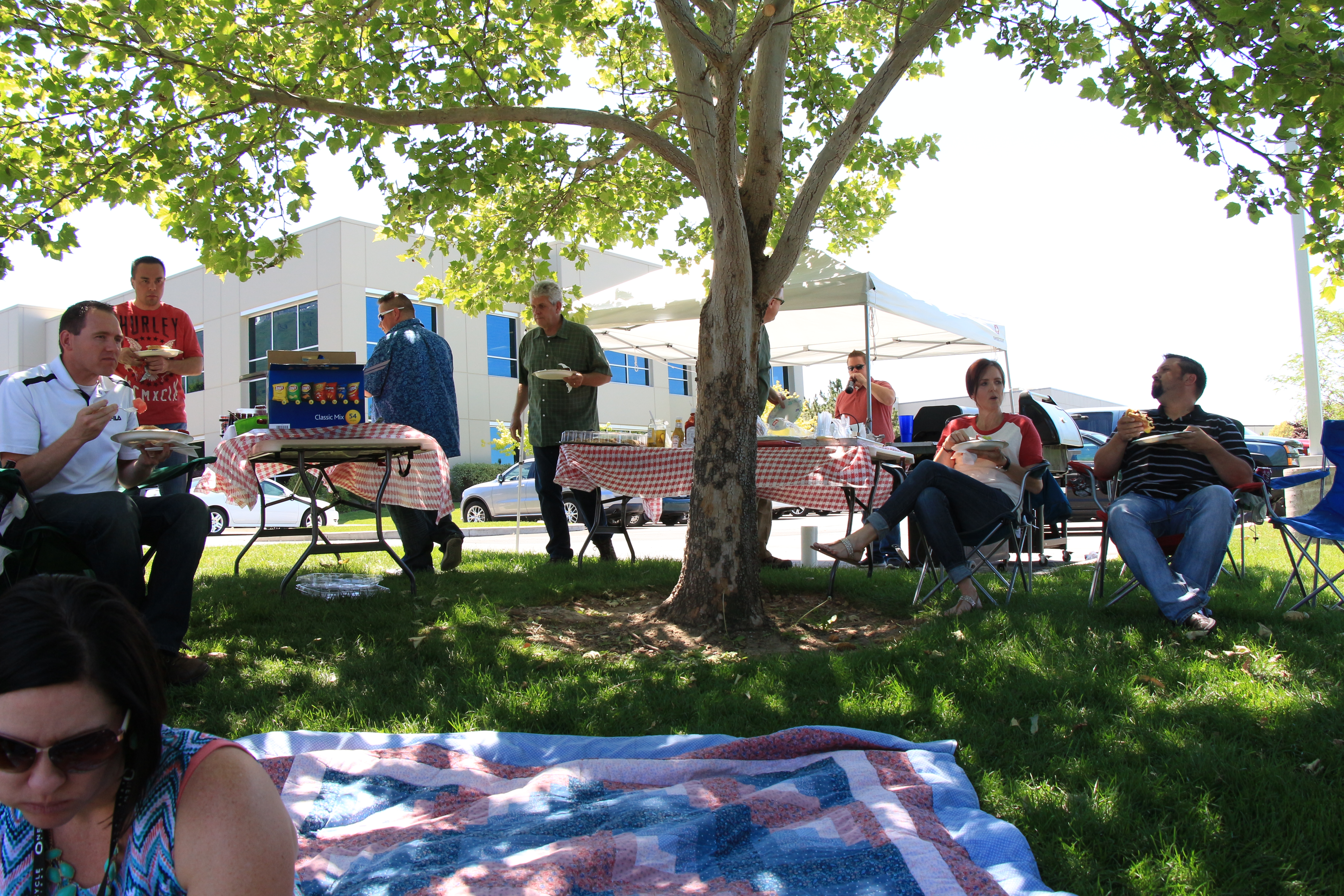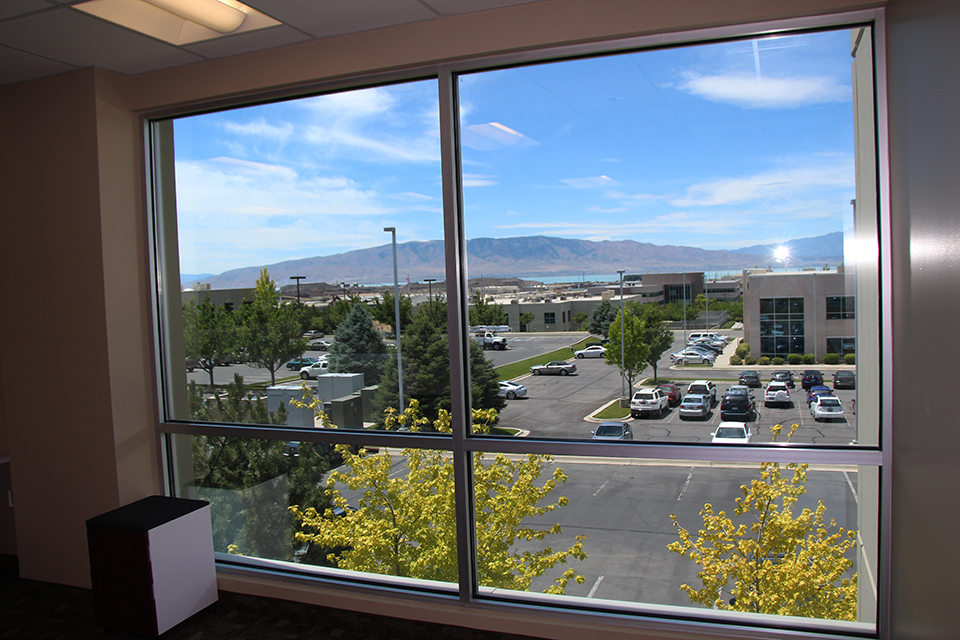I have blood in my veins, not ink. But after working for 30 years in the newspaper industry, some ink surely has mingled with the red stuff.
Newspapers have been a part of my life for as long as I can remember. So many memories, experiences, adventures and friends have been my bounty because of newspapers.
A newspaper always has been there in one way or another. As a child it was the comics for me, the obituaries and recipes for my dad. He kept up on who had passed and on the recipes he might try to improve, by using the newspaper.
As an adult I worked at, visited and consulted with newspapers and helped to craft software solutions for newspapers.
On January 20th of this year the Chief Information Officer of my company asked me into his office. He informed me that my position, along with those of dozens of others, was being eliminated. I was offered a severance package and asked to stay until March 31st to help with my transition out of the business.
Today is March 31st and after 30 years my employment has come to an end.
It’s certainly not my choice. I had hoped to retire from the industry that I love. I’ve lasted longer than literally hundreds of my colleagues at three companies. They have been young, middle-aged and senior. They were bright, friendly, driven, focused and principled. In many instances they have been my extended family. They, like me now, have found their contributions no longer supportable. They’ve had to start anew, find a different way. They have faced the fear and unknown that is now my turn to shoulder.
Childhood experiences
I remember, even as a little boy, going into the front yard to retrieve the newspaper. It was one of my chores and one that I looked forward to.
We lived on M-40 highway in a rural area of Michigan, just south of a small town called Gobles. A driver for The Kalamazoo Gazette, our local newspaper, on his way between bulk drop-off locations, would drive down the highway and throw rolled-and-wrapped copies of the paper into subscriber’s yards.
Sometimes I’d be waiting for him with a little-kid wave. He’d give me a nod as our own bundle of stories and pictures came bounding across the weeds and sand that was our front yard.
The Sunday paper was of course the best. Filled with far more advertisements and inserts, it gave me hours of fun on a Sunday afternoon. Particularly when Christmas or a birthday approached, I crafted many fantasies about the BB gun, radio or flashlight that might go from a newspaper ad to my greedy little paws.
My grandparents, who lived about 90 minutes north of us in Rockford, Michigan, subscribed to the Gazette’s sister paper, the much larger Grand Rapids Press. When we’d visit I’d have stacks and stacks of papers to explore. The Press was exotic to me: it was a newspaper, but it smelled different, yet the same. It used different typography, more color and was many pages longer. I also enjoyed the better quality produced by the Press’ superior printing hardware.
My neighbor, Carl Gilbert, was a senior manager at the Kalamazoo Gazette. I rode the school bus with his kids. I didn’t have a clue of what working at a newspaper was like, but I envied neighbor Carl for his luck. He had several kids, a big house, acreage, a few cars and a barn — he had a life!
My first look behind the curtain came in the sixth grade when Mr. Gilbert came to my class. He talked about the workflow of the newspaper: how stories, photos and ads were created and became the newspaper. He brought with him the prior days’ newspaper (which I’d digested the night before), along with a few grids of pasted-up pages, some page negatives and printing plates! That day I felt like I floated amongst the clouds! A fixture in our home, the first thing I looked at when I’d get home from school and ditch my backpack, was the newspaper. Thanks to Mr. Gilbert, the magical had started to become reality.
Another Kalamazoo Gazette figure who was important to my newspaper habit was columnist Tom Haroldson. He was also known as “TV Tom” since he wrote a column about television. This was important to my pre- and early-teen self. We only received three television channels with any regularity or quality: The NBC affiliate WOTV channel 8, CBS came via WKZO on channel 3 and ABC by way of WUHQ on channel 41. When the weather was just right we could get the ABC broadcast from Grand Rapids, WZZM on channel 13. But TV was very important to me. I was challenged trying to balance my love of reading with wanting to stay up to date with what Andy Rooney was wondering about, the latest difficulty encountered by the Ingalls family, the criminals being tracked down by Detective Ironside and the drama unfolding at Moonbase Alpha on Space 1999. I also may have watched, and mimicked, the Swedish Chef. Once.
I loved reading Tom’s columns as well as a syndicated columnist the Gazette carried, Dick Kleiner. Dick’s column was of the reader-sends-in-question-Dick-answers-it format. Dick was snarky, short, almost rude at times. But he was answering the questions I cared about.
I still remember one reader writing in about one of my TV addictions: CHiPs. The reader wanted to know what kind of motorcycles were used on the show. Dick’s curt reply was “The boys ride Kawasaki 1,000 bikes.”
By the time I was in junior high school I encountered the woman who would become my favorite teacher and a huge influence on my future: my English teacher, Carol Brill.
Mrs. Brill was a firm teacher, in command of her subject. But she also was fun, friendly and most-importantly: a believer in her students. I know in retrospect that she, as much as possible, gave each student as much attention as she could. But to my seventh-grade mind, she taught the class only for me, only wrote lengthy comments on my work and encouraged only me. Of course that wasn’t true, but that’s how it felt to me.
Gobles Public Schools was a small, poor, rural school. The facilities, textbooks and supplies were old, tired and in short supply. But I had amazing teachers. For the most part I did not like school. I was an overweight, introverted, only child which certainly did not help. Surprisingly most of the educators stayed at Gobles for their entire careers, not “moving up” to larger, better-funded districts in nearby Kalamazoo. With rare exception I would say that the students who wanted to learn were well-tended to at Gobles Schools.
Seventh grade is when I started to write. We had to write in journals every day for Mrs. Brill. Many hated that assignment, but I loved it! In most cases we were free to write about anything we chose. As an only child who felt isolated from other people, the dialog I developed first with myself through my journal, and over time with Mrs. Brill through her comments, was critical. She fostered a love of reading and writing, and encouraged me to believe in myself. Nobody else gave me both a push to do more and a sense of promise and hope for a future.
Regularly I reflect on my days in Mrs. Brill’s classroom, the walls covered with posters of puppies, kittens and stuffed animals. She was an adult who treated me like a real person, with a voice and with possibilities. She taught me subject-verb agreement, how to diagram a sentence, how to tighten my writing and how to communicate more clearly. But she set an example and encouraged and strengthened me with her feedback and interest. I owe her a great deal for providing that foundation.
That self-confidence — both in myself and my writing — gave me the pluck to one day pull out my mom’s typewriter and send off a letter to the editor of the Kalamazoo Gazette, Mr. James Mosby.
I told Mr. Mosby how much I enjoyed the Gazette and the work of Tom Haroldson. I offered to him my services if he should ever need them. I told him that I was interested in government and current affairs and that Mrs. Brill could attest that I had a fine career ahead of me.
Lost to many moves over the years is Jim’s written reply, but the gist of it was a thanks for my letter, though he had no openings at the time. He encouraged me to pursue my interest in writing, to write every day, read all I could and get an advanced education. He was so respectful and “proper” to that naïve teenager. He made me feel like I was his peer and, oh well, they just didn’t have any openings. His affirming response encouraged me and only increased my esteem for newspapers and newspaper people.
When I was sixteen I transferred to a private school that allowed students to pursue a self-paced and self-directed education. Once a student had completed the requirements set forth by the state of Michigan for a high school diploma, you would be graduated. If you could complete those requirements and pass the tests, you were done — your age didn’t matter.
As it turns out my move to that school was very fortunate. The school was several miles beyond the school where my mom taught, so I would drive, drop mom off at her office, and then I’d go on to school. Shortly after the school term started my mom and I were involved in a serious car accident. A 1960s-era station wagon turned in front of us and I t-boned the behemoth. My mom, in the front passenger seat and not wearing a seatbelt, was thrown through the windshield. I was wearing a seatbelt but still suffered a bad back injury that later would put me in the hospital for surgery and stuck at home for months of recovery. Fortunately, due to the unique nature of the school I was attending, I was able to do my schoolwork at home.
During my recovery, I put all of my efforts into schoolwork. I was scared of my injury, didn’t feel well, my activities were limited and I just wanted to be done with school. I ended up finishing my state requirements in the spring, shortly after I turned 17.
I was free!
The college years
My focus then moved to college. I was active in our church, president of the youth group, and unsure of my college direction. We didn’t have much money and how to pay for college was a serious question. Unfortunate though that was, my parents had always told me they were not going to be able to “send me to college” – I’d have to work for it or find some other way. So I was not surprised nor let down as the time for college approached, but I still was not sure what I was going to do or how I would do it.
Through my church I took overnight trips to a couple of private Christian colleges: Cedarville College in Cedarville, Ohio, and Grand Rapids Baptist College and Seminary (now Cornerstone University) in Grand Rapids, Michigan.
Cedarville did not impress me at all. I was still recovering from back surgery and was miserable during most of the visit, but I knew it wasn’t for me.
My visit to Grand Rapid Baptist was different. For starters, I really liked the beautiful campus and the people were far more inviting and seemed more serious than those I encountered at Cedarville. While on my visit I learned about a media conference that was being held on campus. It was led by Tim Detwiler, a professor of communication and speech at the college. It was to be a multi-day conference covering communication, writing, radio, TV, newspapers, etc. As I recall, I signed up on the spot and begged my parents for the fee later.
I was impressed by a presentation from WZZM TV’s meteorologist Craig James. Craig didn’t talk about TV or weather, but about communication, journalism and mass media. One of the exercises of the conference was to write a radio spot and go to the college’s radio station, WCSG, to record it in the studio. Craig did a read-through with me and made some suggestions. I should have been nervous about the recording part, but I was more nervous about writing the script to time!
At the radio station I recorded my spot, which was for the Grand Valley Blood Bank. I had rehearsed enough so that I hit my mark almost perfectly. The station manager, Lee Geysbeek, said it was good enough to put on the air. For a brief time my spot was live on the air. I was 17 and had written and recorded a radio ad. Yeah, I was pretty pumped!
The next important thing to come out of the conference was when Detwiler approached me about attending school there and working on The Campus Herald, the school’s newspaper. He had someone lined up to be editor, but needed an assistant editor who would oversee the production and layout work. There would also be reporting and editing work involved – a jack of all trades position. There was a stipend that would go along with it – enough to be a major help toward tuition.
Throughout the summer I talked about going to school at GRBC&S and devised many schemes to pay for it. I sent away for numerous scholarship opportunities and even wasted money on a scam that would give me a test and return to me a list of organizations that would give me free money based upon my interests and aptitudes. What I got in return was a generic printout on green-bar tractor-fed paper of places around the country that had scholarship programs – some offering tiny sums, others with requirements that came not within a country mile of my situation (Daughters of the American Revolution had a $100 scholarship, for example).
Then my parents dropped a bombshell on me. They’d pay for my first year of college. Since they had prepared me for having to go it solo, this was a huge and happy surprise.
So that fall I packed off to college an hour away from home. An only child, spoiled, horribly introverted and shy, I thrust myself into dorm life (sharing a room with two other guys and a bathroom and shower with 60).
Apart from classes and a taste of independence, this was where I first got my hands on a waxer, border tape and layout grids. I knew nothing, but learned quickly from more senior students. I wrote for the paper as well. Our small staff did everything: we covered the sports, campus activities, faculty news, photography, design and layout. I learned and learned and learned!
The one thing we didn’t do ourselves was the typesetting and printing. Both services were donated by the printing department at Spartan Stores. We would type our copy and hand-deliver it to the Spartan Stores printing plant. We would return and pick up the cold-type galleys. After pasting up our pages we’d return to the printing plant with the flats. Yet another trip would see the editor and me loading the trunk of his Nova (which had only a vague idea of a suspension) with the printed copies.
The work was not yet done as we had to distribute the papers on campus. Granted, GRBC&S was a small school (around 2,500 students in my day), but that allowed me to get my hands in so many aspects of newspapering.
The first semester of my sophomore year found me out of funds and therefore unable to continue at GRBC&S. I moved back home with the intention of finding a job and continuing my education at Western Michigan University.
WMU being far less expensive than GRBC&S I took out a student loan in order to get back in school.
The Kalamazoo Gazette
And I applied for jobs.
One of the jobs I applied for had a simple headline: “TYPIST.” The job was at the Kalamazoo Gazette. I had taken typing in high school and earned extra money in college by typing papers for other students. I was fast and very comfortable behind an IBM Selectric.
Not too long after applying I got a call from Dave Anderson at the Gazette. Dave didn’t talk much but in short said if I was interested I’d have to go to the Michigan Employment Security Commission and take a typing test. If my numbers were good, I’d be called in for an interview. He told me to just stop by the MESC office and tell them I was there to take a typing test for the Gazette.
(Dave ended up being very pivotal in my life – read more about him here: https://www.aaronkuehn.net/tol/?p=568)
That seemed odd to me. The MESC was where people went for unemployment assistance. And why wouldn’t the Gazette do their own typing test? But I went ahead and got myself to the MESC office.
It was a daunting process. Still afraid of my own shadow, I stood in line with a lot of people applying for, fighting for and otherwise trying to get help because they had no job. When my turn came I was nervous and the clerk was plenty harried and ready for her weekend to begin.
I told her that I was there to take a typing test for the Gazette. She handed me some papers and told me to fill them out and then get back in line.
The papers were the same ones everyone else applying for benefits was completing. They wanted all kinds of information – I had some answers, other questions tested my powers of invention.
After handing over my paperwork I was directed to an IBM Selectric. At least I think that’s what it was. The letters were worn off the keys, it sounded like a hay bailer and appeared to have been used for gunnery practice. It was a rough piece of equipment to say the least.
I did my test and felt like I did okay, but certainly not up to my potential. I couldn’t wait to get out of that place. It reeked of bureaucracy, despair and cigarette smoke.
Another call from Dave Anderson came several days later where he asked me to come in for an interview. I was nervous, scared, held no illusion that I’d get the job, but I’d get INSIDE the Kalamazoo Gazette for the first time!
The day of my interview didn’t get off to a great start. I thought I knew the best way to get to the Gazette building – I started at the Sears building and headed north. I misjudged the one-way streets, though. I had driven about four blocks before realizing I was headed the wrong way on a one-way street. Those other drivers, and the cop walking a beat, weren’t being neighborly with their frantic gestures, but I was too distracted to care.
I checked in with the receptionist and soon Dave came down to fetch me. He was a short, somewhat portly man in his 50s who used few words. He took me to his messy and cluttered office. He said the publisher wanted to see me, so he got on the phone to speak with the man. I was trying to take in all that I could while processing the idea that the publisher wanted to see me. For a typist job? Had there been a misunderstanding?
For the few minutes that I sat in Dave’s office, two people stopped by to exchange a few words with him. I immediately picked up on the fact that Dave was well-liked and respected. He laughed and joked easily.
Down to publisher Dan Ryan’s office we went. Dan was a major figure in Kalamazoo. I’m going to guess he was six-foot-six and in his late 60s. He was imposing but very friendly.
Dan almost ignored me – he had a matter to discuss with Dave first. Dan held a page from the paper and said “Do we know who is putting in upside down ads?”
Dave replied that he knew who it was and that it was a mistake – he’d spoken to the person responsible.
Dan replied “Okay.” Turning to me he said “A lot of advertisers would pay us a lot of money to run their ad upside down or sideways – but we don’t do that.”
I still remember so much of that interview. Dave and I sat in a gorgeous wood-paneled office, across from Dan at his desk. Dan asked me if I was related to some famous baseball player. I figured it was an ice-breaker and I was going to be stuck on that frozen lake because I knew absolutely nothing about sports nor about an athlete with my name.
Next he asked me what my dad did.
Next he commented on my typing speed. He implied that men usually didn’t type as fast as I did. I would soon learn that that was not really the case. The vast majority of typesetters and newsroom reporters were men – and they were fast. One male copyeditor in particular primarily used two fingers and he could set a keyboard on fire (or maybe it was from the cigarette he always had at hand).
I started part time in the composing room. I learned that the union “printers” had been bought out and were slowly leaving the company. The Gazette was hiring young punks such as myself to fill the void. It was an interesting time to say the least.
The union area was a separate room and non-union workers weren’t supposed to go in, use their waxers, scissors or other equipment. Some of the old timers were friendly and eager to share their trade. Others were at best cold, at times hostile and intimidating.
Dave started me on advertising paste-up. I got almost no real training – just what I’d learned at the Campus Herald. I was not prepared for the volume and complexity of work at the Gazette. Not to mention deadline pressure. I can’t tell you how many times my supervisor, Bob, would yell “Aaron! Can you catch this daily?” And yell he did! A daily was an ad for the current-day’s paper which meant you had to get on it fast because it was going on the press right away.
I did okay at paste-up, but I wasn’t great. Fortunately they’d hired me as a “typist” so it wasn’t long before they put me in front of an Atex terminal and started to teach me how to set type.
I learned from co-workers and from Dave. The Atex keyboard was an enormous, heavy mass of plastic and row upon row of keys. Many of those keys had no labels, or the labels they did have did not correctly predict that key’s function. It was overwhelming. I saw so many people plop down at one of those enormous keyboards and just go to work making it do things. I just knew I’d never make it. Years later I would be able to carry on a conversation, read an ad mockup and set type without any trouble whatsoever.
For some reason, I caught on quickly. And loved setting type. To this day I can’t explain why I had such an affinity for the Atex system. I felt at home at that keyboard and wanted to learn everything I could about Atex and the typesetting trade.
Within months Dave offered me a move to full time, which meant more money and full benefits – including tuition reimbursement.
At about that time the Gazette celebrated its 150th anniversary. We busted our asses putting out an enormous special commemorative edition, we hosted a public open-house and tours, Dave was interviewed by the local CBS station which did a story about the paper. I find it difficult to convey the sense of community, purpose and excitement during my first year at the Gazette.
I worked through many different roles and levels of responsibility. I learned how to operate almost all of the prepress equipment and perform most job functions: Autokon and ECRM scanners, video setters, laser imagers, plate makers, page cameras, Atex, and more.
One day one of the techs from the Booth Newspapers Computer Division, Pat Curtis (a character of the highest order) pulled me aside. He said “You may want to brush up on your Unix skills.”
He was often cryptic and everything was told with an evil or mischievous look in his eye. I asked him why.
He told me that we were getting the new Camex Breeze Display Ad system and that my name was being discussed for the role of system administrator.
This was encouraging and exciting, but Pat was a curmudgeon, storyteller and wasn’t afraid to get a detail or ten wrong. I wasn’t counting any chickens.
Since my only exposure to Unix had been at WMU on their DEC VAX system for an obligatory BASIC programming course, I was a little nervous if I’d be up to the task. That programming class was in a huge lecture hall with about 400 students. So between trying to follow in that large venue and having to do all of my work in one of the computer labs, I had a hard time grasping it. I did fine, but any successful navigation of the shell prompt I achieved was purely by the grace of my notes and helpful computer lab assistants.
But it wasn’t long before Pat’s prediction came true and Dave told me that I’d been selected and would be going to Boston for training. The training was to take place in October so I dropped out of that semester of college so as to not miss the opportunity. I lost all of that semester’s tuition and had to start those classes over during future semesters.
My decision to drop out during that semester was a risk and gamble that has paid off many times over.
The trip to Boston with Dave was my first airplane flight. It helped that Dave was a huge aviation buff, his older brother had been a flyer in WWII and he absolutely made that first flight a pleasure. I was still scared, but his enthusiasm and explanations of how the plane worked absolutely got me through it without an embarrassing incident.
That trip to Boston was huge for me. We met up with Larry from the corporate I.T. division in Ann Arbor, Michigan. The three of us worked hard all day in our training. I learned Unix very quickly, as well as Operating System Real Time (OSRT) – the proprietary operating system that Camex had developed. It was the beginning of my “tech” career.
I loved working on the Camex system. I developed several pieces of custom code shared with the other seven newspapers in the Booth Newspaper group.
My biggest accomplishment was a tape backup management system. Camex had assumed ads would run and be purged and new ads would be built from scratch. Perhaps if the Camex company had survived they would have crafted a better solution for backups, but at the time, we were limited by our meager disk space.
In the newspaper business it is typical for ads to be recycled each year. Bob’s Tailoring Shop is going to run a special on suit alterations for prom season. He’ll probably run almost the same ad next year, maybe with a price change. In most cases the advertiser gets a rate reduction if they run a “pick-up” ad – one that is picked up from an earlier run and reused. Of course for us, it saved a lot of labor and materials if we didn’t have to re-set all of the type, rescan the artwork, etc.
The code I wrote collected a batch of the oldest ads, archived them to tape, created a searchable index of the ads that had just been archived, and then purged those ads from the main database. In addition, we were one of the pioneers in the country to hide a tiny I.D. right in the ad – usually in the border. So if you had that code number, you could look it up in the index and then extract that ad from the tape.
That solution saved countless hours and dollars over more than a decade that the Camex Breeze system was in use.
I’d written macros and formats and other enhancements on Atex, and those were very satisfying to me. But the tape backup system was my first bit of real coding and the fact that my colleagues at other papers wanted it was a major boost for me.
Information Technology
Several years went by where I was both the system administrator for the Camex system and the team leader for the ad design operation at The Gazette. Then the next big opportunity came.
I had just finished earning my degree at WMU, a bachelor of science in Political Science with a minor in English/professional writing. All in all it took eight years to earn my degree since I was working full time and squeezing in a class or two when I could.
I forever will be grateful for the tuition reimbursement plan at the Gazette. When all was said and done, they paid for the tuition, I covered the books and parking. Not long after earning my degree, my friend and mentor Dave announced that he would retire. That’s when I received a major promotion to work in Systems (that being what Information Technology, or I.T., was called back in the day). In my new role I was responsible for the support and maintenance duties of Camex, Atex, the PBS circulation system, our accounting system, Macintosh desktops, backups, disaster recovery – the whole gamut of I.T. work.
There was a long period of training on all of the technology. I got my first pager. I worked crazy long hours, was on-call, was sent to some great remote training on great technologies: two rounds of Novell Netware schools, Macintosh OS training. I went to Bell Labs in Minnesota for advanced Solaris/Unix system administration training, went to California to Autologic’s Laser Imager school and more. I learned so much – formally and informally. I worked with an amazing group of people and learned so much.
When management decided to create its first remote bureau, in the adjacent city of Portage, I was assigned to the transition team. I helped to set up the office, computers, networking and other things required to make our storefront at Southland Mall a go. Later when the office moved farther south on Westnedge Avenue, I again was called on to pull off the move and configuration of the new and larger space.
Working with area funeral homes was another big project I got to work on. I visited numerous funeral homes to install and configure software and modems so that they could transmit obituaries directly into our Atex system. Obituaries are of course very important to families, they need to be accurate and meeting deadline is always a challenge. In addition, they are very profitable for the newspaper. By allowing funeral homes the ability to send directly to our database saved considerable time, prevented errors that occurred during dictation over the phone and gave them a better chance of hitting deadline.
The Kalamazoo Gazette was a special place. I am fortunate enough to have realized it at the time. Too often we fail to appreciate the good things until we have the clarity of hindsight. Not so with the Gazette and its people. We were small enough that everyone knew everyone. And working in a small I.T. department, I got to do everything (admittedly when working a 12-hour shift due to a head-crash on a washtub drive, I didn’t feel so blessed). But we were just big enough, and part of a large enough chain, to get in on new technology. It was a great time to be in the industry and with a great group of people. It was family. It was cozy comfortable. I was paid well, had benefits that today would make your eyes pop in disbelief and fully intended to retire from the Gazette (hopefully by age 50).
Then one day I got a call from a colleague at the computer division in Ann Arbor, Ralph Butler. Ralph told me about a paper in Virginia that was looking for a person with Atex experience. Y2K was looming and was everyone’s nightmare. This Virginia newspaper needed help to support Atex while the more experienced staffers worked on Y2K readiness. Also, they had signed a deal with a software company from Utah called Digital Technology International to replace all of their front-end editorial and advertising systems. DTI was the first newspaper vendor to partner with Adobe on its upcoming page design tool that was nicknamed “The Quark Killer” as it was expected to put the leader in page composition, Quark Xpress, out of business. The code-name for Adobe’s product was K2. I’d seen previews of what was to become InDesign and was very excited about its prospects.
The newspaper was The Virginian-Pilot. It was well-respected to say the least. I had heard our page designers reference it often as it regularly won awards for the best-designed newspaper and was famous for its use of photos – it was a photographer’s newspaper.
I hadn’t thought of leaving the Gazette. I was happy, more or less. There were some things I didn’t like about my job: being on-call, working rotating shifts that included nights and weekends, changes in management (and philosophy) that I didn’t agree with, etc. But overall, I wasn’t on the hunt.
Ralph strongly urged me to send a resume – just for kicks. Maybe I’d get a free trip out of it!
I sent off a resume and was promptly contacted. Lo and behold, The Virginian-Pilot did in fact fly me to Norfolk, Virginia for a few days.
It changed my life.
The Virginian-Pilot
The Virginian-Pilot was a very large newspaper. But it had that same family feel to which I’d grown accustomed at the Gazette. When my future boss and a colleague met me at my hotel it only took minutes to feel like we’d known each other forever. Randy Jessee would be the manager and John Stackpole the other Atex specialist. They swept me off my feet like the prettiest girl at the dance.
I spent a couple of days touring the paper, meeting people, talking about the job and spent one evening with the A1 design team, observing their workflow, their POD collaboration methodology and just getting a sense for the place.
Near the end of my visit I was thinking “I don’t care if they pay me half of my current salary – I want to work here.”
At the end of my visit deputy managing editor, Nelson Brown, pulled me into a private office in the Sports department. Brown was Randy’s manager. Nelson said (paraphrasing from the best of my memory) “You’ve got a good thing up there in Kalamazoo, but we want you here with us. You’ll find the best people here and I guarantee you you’ll learn – you’ll have opportunities here. Randy, John and Mark, well, there aren’t any better people. And I see you fit in. As you go home I want you to think about one thing: five years from now, what will have made you a better person? Where will you learn the most?”
I was shaken. He was so confident about his paper and his people. He focused on the PEOPLE and the WORK. It wasn’t about money, benefits, perks, etc. None of that was mentioned. It was about quality of life and personal and professional growth. It wasn’t the first time Nelson would impress the hell out of me. He remains one of the highest quality people I’ve known.
Not long after my return to Kalamazoo I got a formal offer. I’ll admit we negotiated a little bit on salary, but they guaranteed me no nights, no weekends, no rotating shifts. I’d have a pager and be on-call but because they had such a large staff the likelihood of being called during my off hours would be slim. They’d pay for my relocation, put me up in an apartment while I house-hunted, give me generous time off right out of the gate, and had a pension AND a 401(k) like the Gazette. I’d leave a cube farm and have an office with a door.
I was ready to sign up but I spent a couple of weeks pondering. I’m a Pisces and am fishy just like my sign. It often takes me forever to make big decisions. And the decision to move was huge. I was still introverted and shy, but my time in Systems, having to interact with a variety of users, present at cross-paper meetings, etc. had given me more confidence. But I was still unsure of giving up the Gazette and moving. But to be honest – the quality of life is what hooked me. Having a regular schedule, no rotating shifts and no weekends. After 13 years I’d have a “normal” life.
I accepted the job and started another great association with great people.
And Nelson could not have been more right. At the Pilot I grew and grew and grew. Almost no opportunity was denied me. I was in on the ground floor of the DTI implementation and saw K2 become InDesign.
I saw numerous major shifts in technology. When I joined the Pilot we used an ancient Atex system for all but section fronts, where we used Quark Xpress running on Macintosh computers. We used Novell Netware for storage. The number of Windows computers could be counted on one hand. Some critical processes at the printing plant still relied on a Radio Shack TRS80 computer. Furniture in the newsroom was embarrassing: it was falling apart, taped together – a danger to life and limb and the occasional puppy that one designer brought with her on the night shift.
I got to travel as well.
The Pilot pioneered the use of digital cameras for news coverage. We covered the Sugar Bowl 100% digitally – the first news organization to do so. I was sent to New Orleans in advance of the Bowl to set up a Macintosh network in the press pool under the bleachers. When photographers arrived to cover the game I was in real-time communication with the newsroom back in Norfolk, Virginia. Photographers would run in, edit their images on Mac laptops using Photoshop and then I’d transmit them via FTP. We’d practiced back home but everything was new and had not seen the real world. But it worked. It worked with nary a flaw. And it was exhilarating.
I also attended, later became a presenter and ultimately vice president of the international DTI User’s Group. Each year I’d travel to Utah to teach other newspapers how we’d exploited our DTI system and to learn about new features coming. I also did my fair share of complaining about bugs and tried to influence future development.
I also experienced hurricanes (my house construction had to be restarted after a hurricane destroyed the framing, took down some of my best trees and left me living in an extended-stay hotel for months). Those same hurricanes had me staffing disaster locations or huddling in the safety of the Pilot’s bunker-like building to do my part to make sure we were able to keep the community informed during the crisis.
I was able to help launch new products and interesting new businesses. I learned. I worked shoulder-to-shoulder with some flat-out amazing people. People who were my friends and who were passionate about the mission of newspapers. I was proud to tell people where I worked. And I was proud of what I did.
My ten-year mark at the Pilot loomed and things had started to change dramatically. For a long time newspapers had struggled against other media. The Pilot had finally come to the point of layoffs, reductions and reorganizations. They did buyouts, offered early retirements, let people go, cut products and implemented extreme cost-cutting measures.
My boss quit. The CIO was let go. It got depressing and sad very fast.
That’s when I realized I needed to make a change.
Digital Technology International, Utah and Newscycle Solutions
To me the obvious option was to see if our vendor, DTI, could use me. I knew so many of the people at DTI through my involvement with the user group that I felt I had a good relationship with them already. So I sent a resume and an email asking if they had a need I could fill.
They did. It would be in the Quality Assurance department where I would work with Adobe products to write scripts to automate their installation and implement automated testing – something that as yet didn’t exist.
The benefits were not as good as the Pilot, but the Pilot was reducing those as well, having already dropped the pension plan. But my thinking was I’d get to focus more on technology that would be portable and meaningful within and outside the newspaper industry.
Plus I loved the mountains of Utah. Just loved them.
So after 10 fantastic years with the Pilot, I accepted a job with DTI. I loaded my Dodge Ram pickup, hitched a U-Haul trailer to the back and had my Virginia house listed for sale. Cross-country I went.
It was a good move. Things at the Pilot got even more challenging after I left. There were more layoffs, more reductions. I don’t know if I would have lasted – maybe, maybe not. Today, seven years later, there are few familiar faces left there.
Just weeks after I started working at DTI, there was a layoff. Talk about frightened! I was living in a tiny temporary apartment, my house in Virginia was for sale, I felt in limbo. Many good, senior people were let go. But I was spared.
I caught my breath and pushed on. Again, I got to learn. Automated testing wasn’t to become reality for more than five years, but I was able to go on sales calls and do demos, the biggest and most important to the Chicago Sun-Times. I continued to teach at user’s group. I was able to influence the software, test it, see features first, be the voice for customers and developers alike. By gaining greater exposure to our international customers, I got a more broad world view. My belief in the importance of newspapers was only made deeper by learning of the struggles our customers faced in less than open and fully democratic societies.
In 2013 DTI was purchased by an equity fund and merged with several of our former competitors to become Newscycle Solutions. Again, there were multiple rounds of layoffs and products were shelved.
I keep thinking back to Nelson’s advice, to consider where I’d grow. Excellent advice for anyone. But he was so sincere and so persuasive. His words have stuck with and guided me all of these years. He could not have been more spot-on.
And I say it to those reading this. No matter where you are in life, which fork in the road do you believe will give you the most growth, most opportunity, best chance be better? Better can be defined however you like. But I encourage you to not consider money. Quality of life, that’s the measure for me. It always has been.
And now, with seven years behind me at what is now Newscycle Solutions, the needle on the layoff wheel has landed at my name.
After having been witness to, and dodged, many layoffs in the past, I think I have already largely processed the likelihood of this day. I have felt shocked, but there were no tears, no explosive anger. Just matter-of-fact “it’s-my-turn” acceptance. So many people so much better than me, older than me, with far more challenging personal lives, have lost their jobs before me, that I truly feel lucky to have lasted as long as I have.
Newspapers have been a part of me all the way back to those first newspapers thrown into my front yard. Working in the industry was a dream. A dream that came true and was in so many ways better than I could have imagined. I met so many great people along the way and learned so much. I got to travel, explore and become a different person than that shy and reserved teenager who didn’t know what to do with his life.
I’ve been in the ink now for 30 years. I have loved most of it, had some pain and frustration along the way, and now it’s my time to bow out.
As of this writing I don’t have a job, but am looking. I am looking for something where I can use all of the skills that I’ve gathered from this incredible industry. And from the amazing people who gave me opportunities, took me under their wing, gave of their time and taught me over these many years.
Stop the presses.
Some photos from the journey
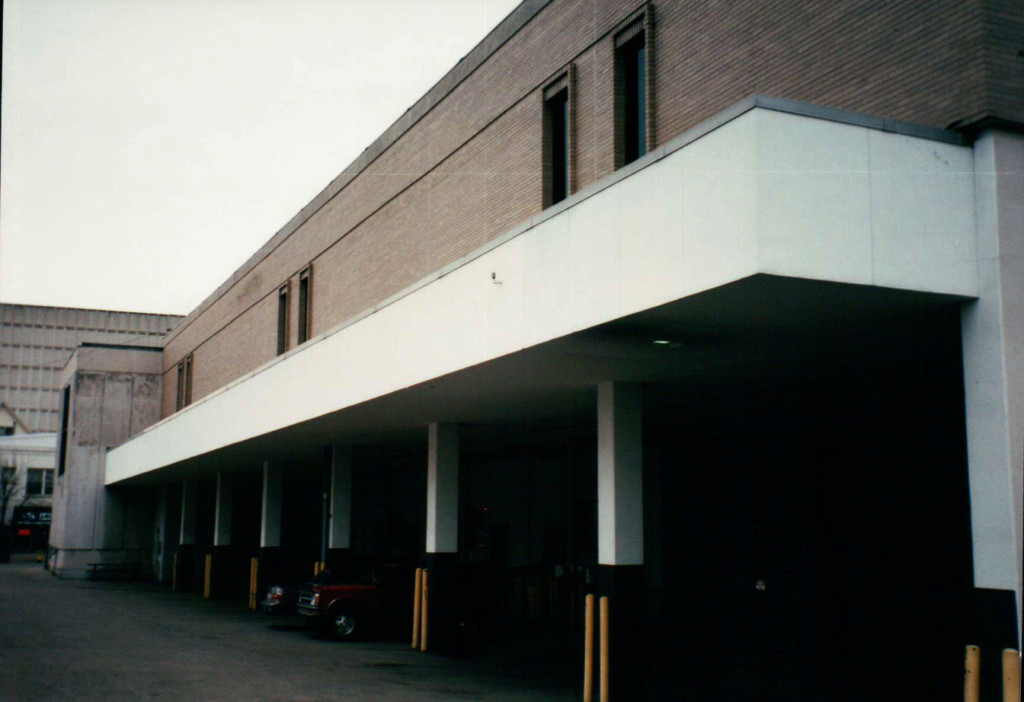
The Kalamazoo Gazette’s loading dock. This is where drivers would pick up freshly-printed newspapers to deliver.

An Atex keyboard. If you read a Kalamazoo Valley Community College class schedule, Stewart Clarke furniture ad or a Libin’s menswear ad, I probably set the type for it with a keyboard like this.

A pair of Compugraphic Videosetters. One of my jobs at the Kalamazoo Gazette had me arriving in the dark hours of the morning to operate these machines that produced the cold type that would be pasted up for that day’s newspaper.

The platemaking department at the Kalamazoo Gazette. Another one of my jobs was as a platemaking technician. It was one of my favorite jobs.
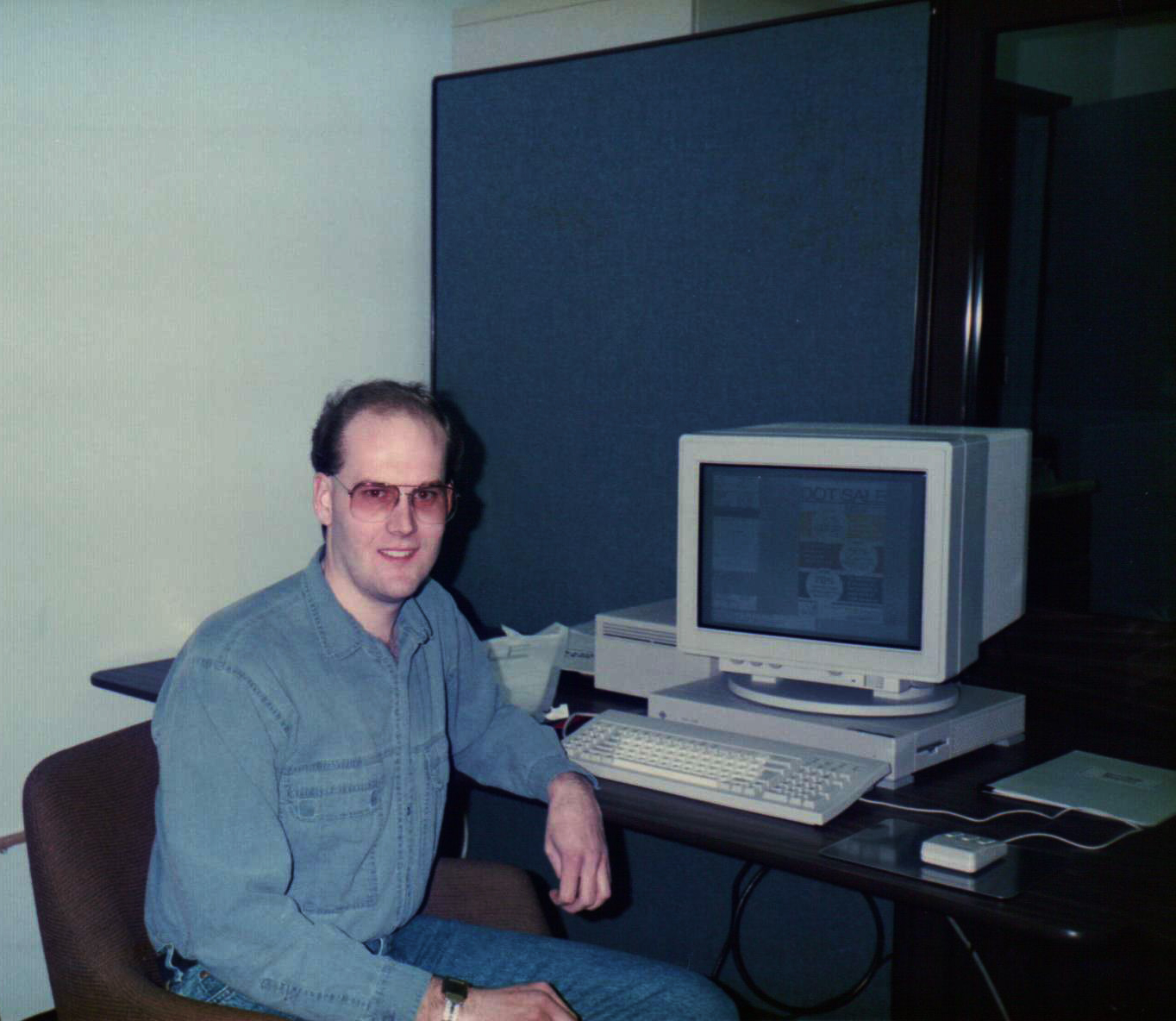
This is me at one of the Kalamazoo Gazette’s new Camex Breeze ad design terminals. On the screen is a full-color ad for JCPenney.
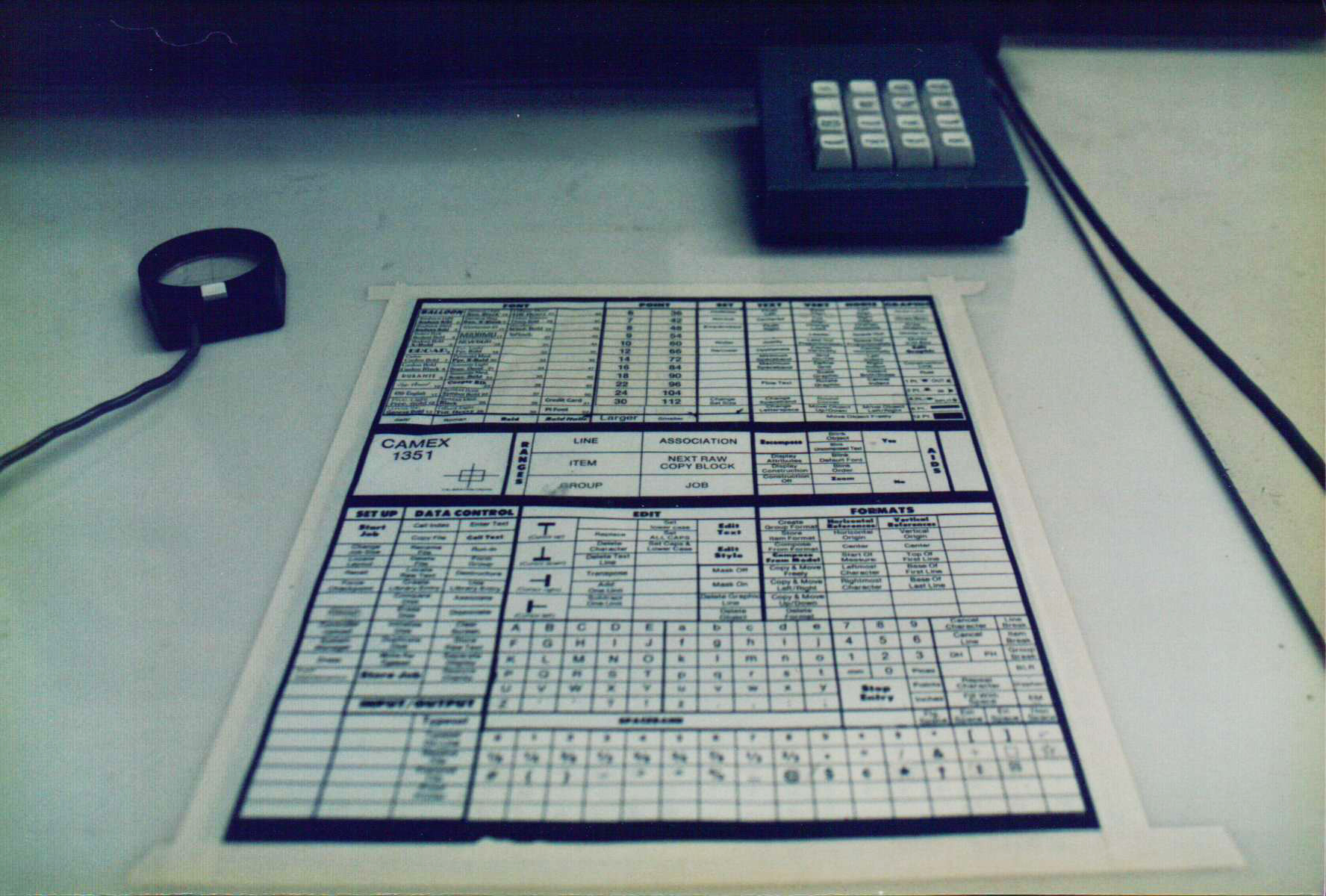
This is from an older Camex ad design terminal known as the Model 1351. It was an enormous, loud, temperamental monster.
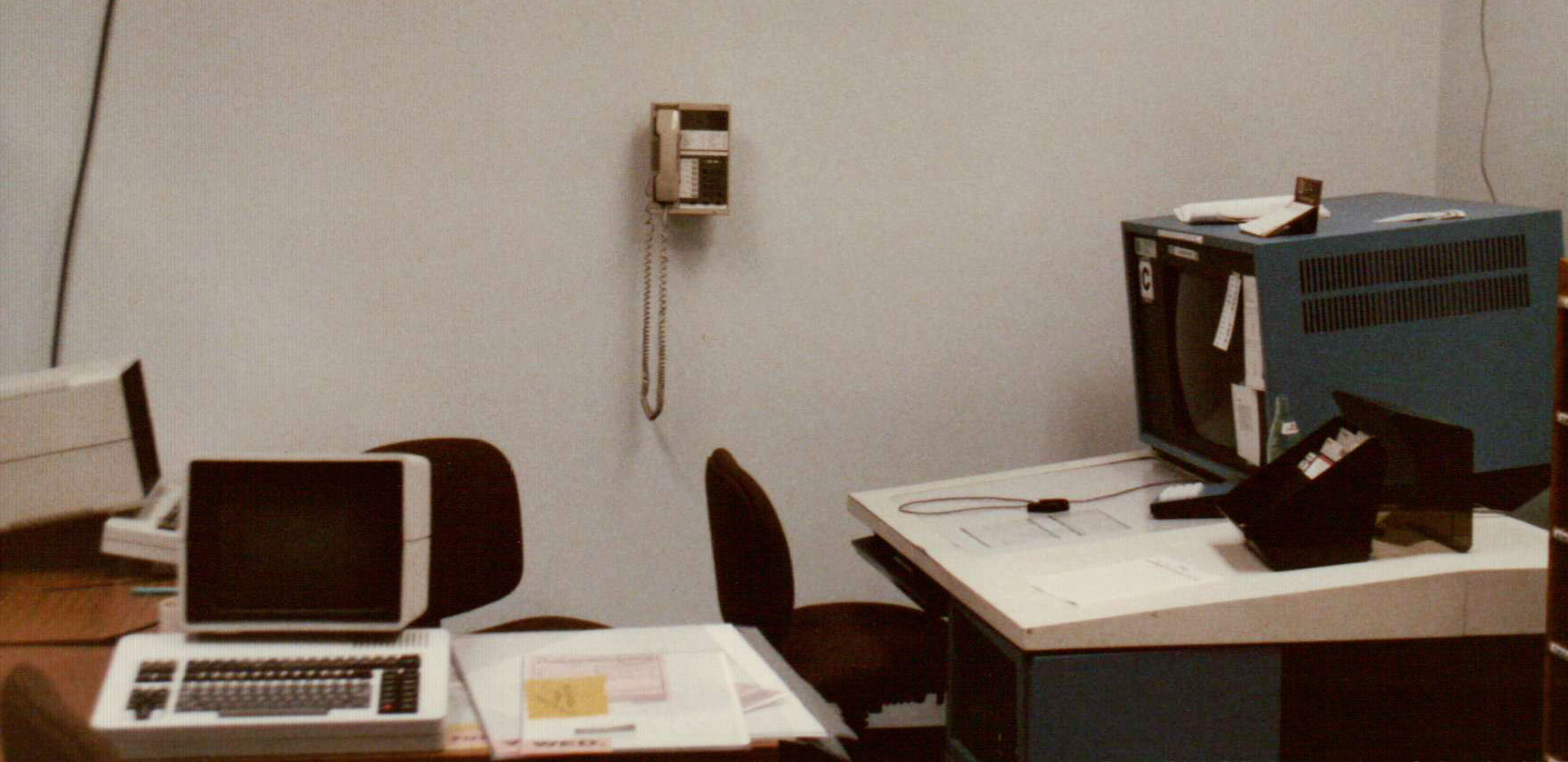
In the Gazette’s ad design area, an Atex terminal (left) sits adjacent to a Camex 1351 system (right).
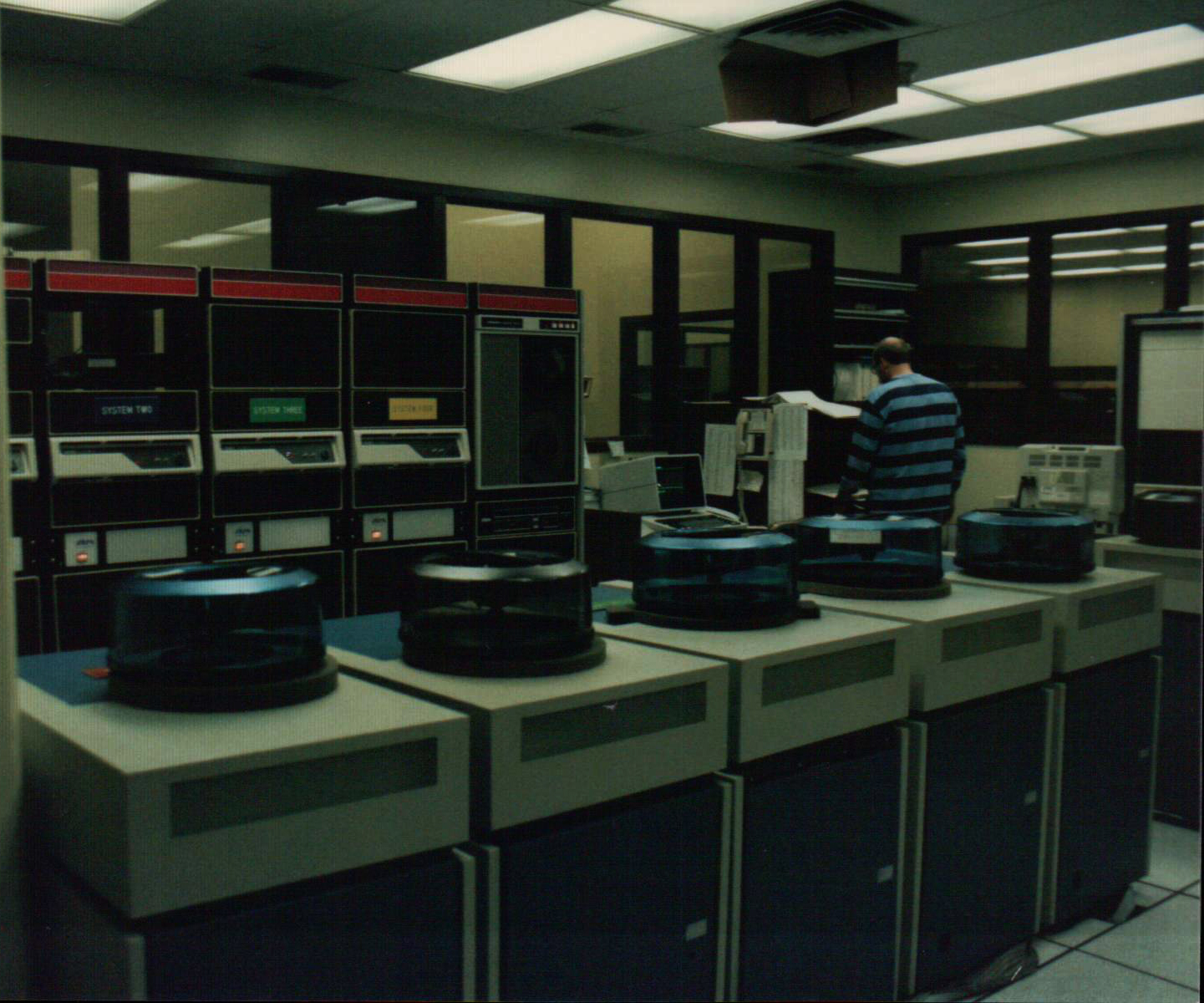
The computer room at the Kalamazoo Gazette. My friend, the late Ron Laugeman, keeps his eyes on things.
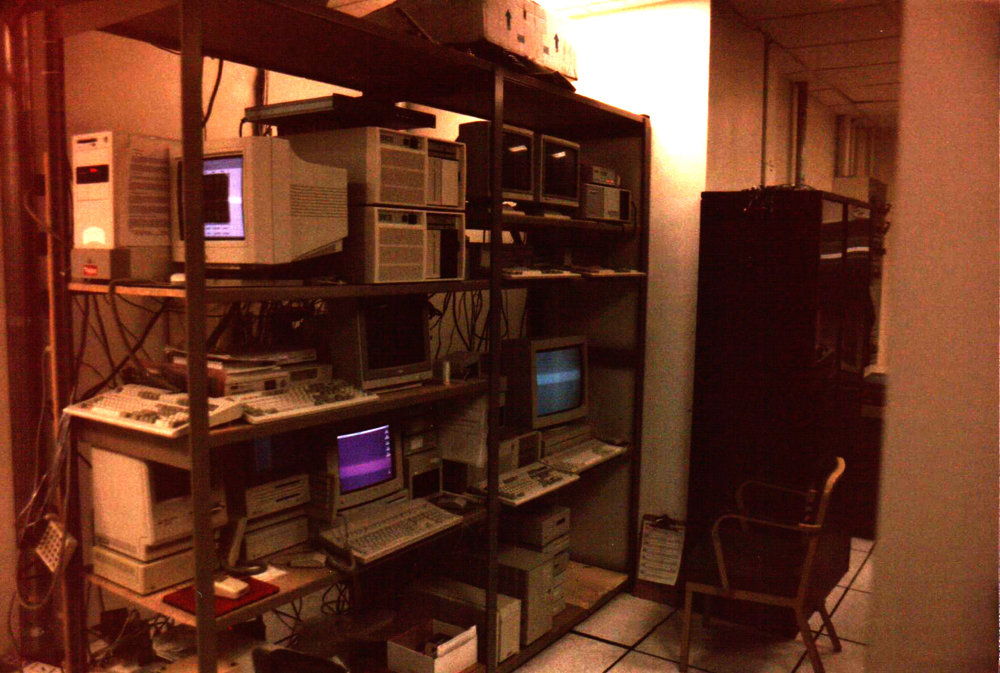
This scary mess was the result of the Gazette’s computer room being woefully too small. It housed a pair of Novell servers for the photo and text archive, the PBS circulation system, the Associated Press hardware and much more. Yes, I did know how to work with all of those systems. Phew!

The Gazette replaced the Compugraphic Videosetters with Autologic 3850 laser imagers. These systems would eventually move the Gazette to direct-to-negative processes.

At the Gazette one of my Systems jobs was to print miles of reports in the printer room. This room, adjacent to the accounting department, housed numerous heavy-duty line printers. On Saturday nights, printing bundle tops for the Sunday paper, these printers would all be humming, turning the room into a furnace.
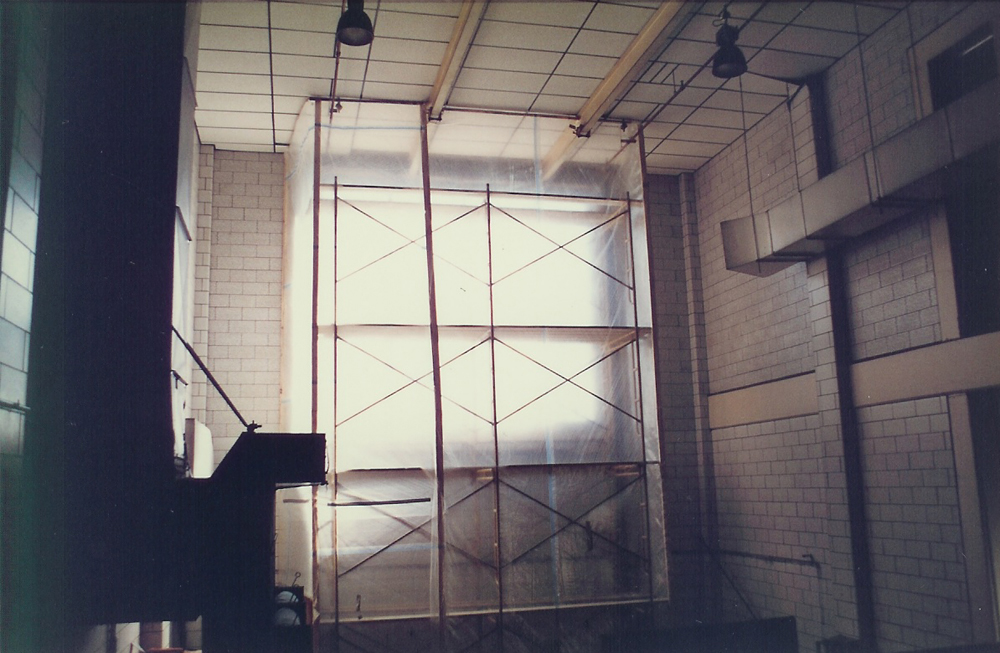
During my time at the Gazette we added on to the building in order to add more press units. This allowed us greater printing flexibility and more color positions.
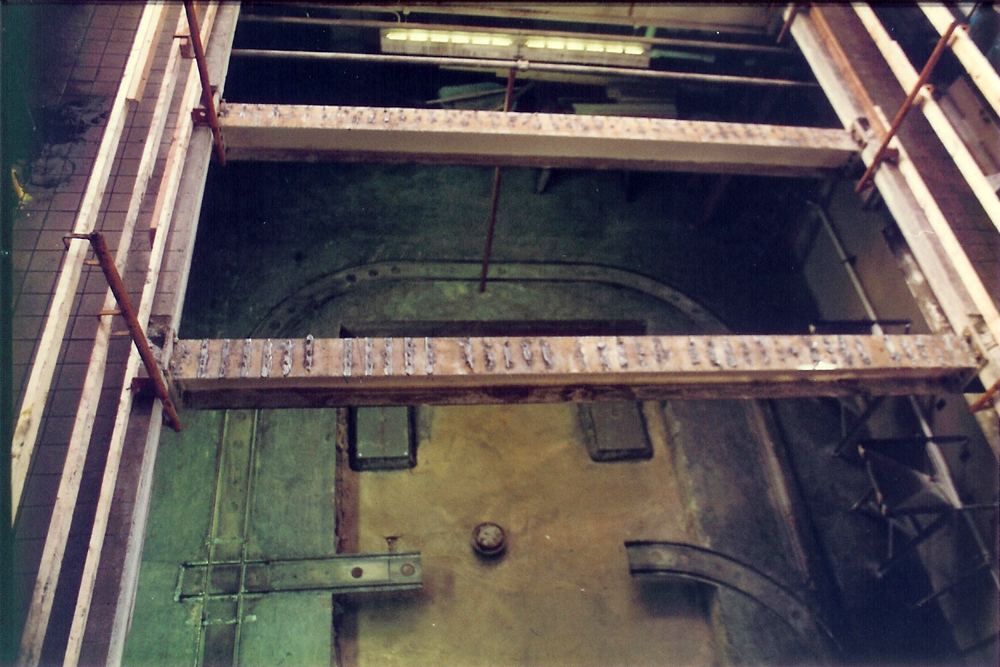
A view from the top of the Gazette’s presses, down into the reel room (during the press expansion construction).
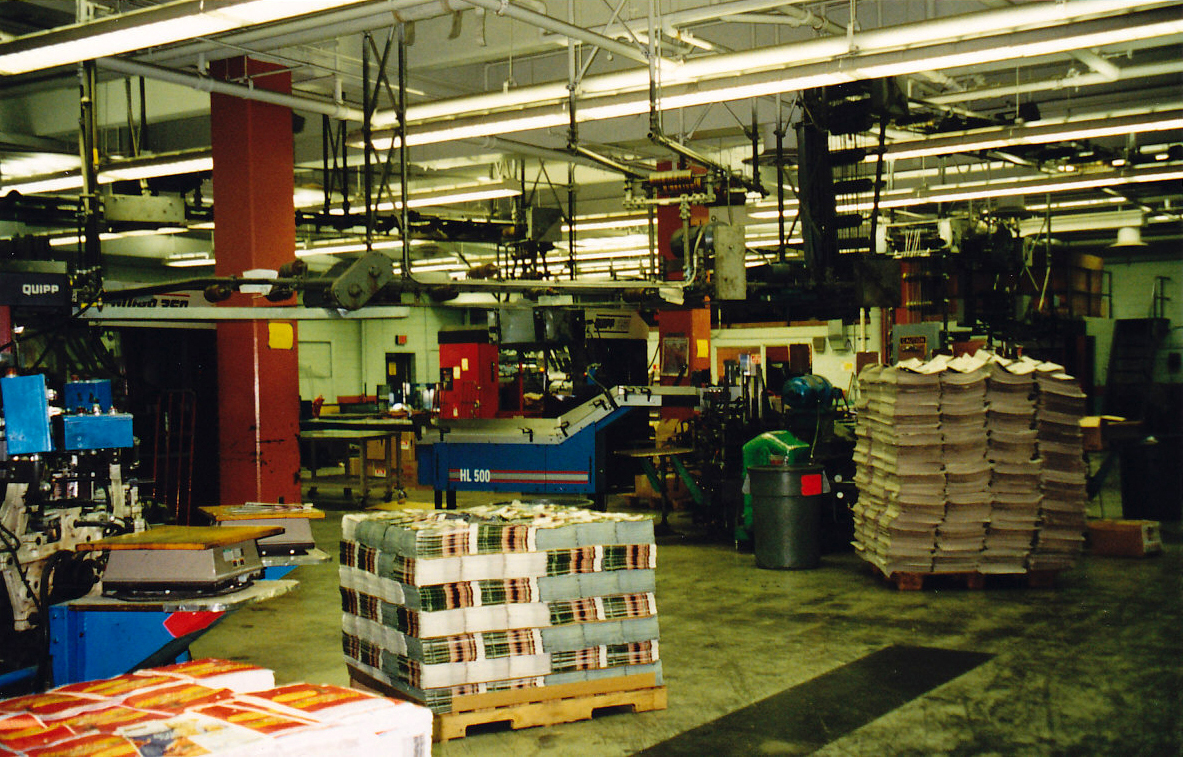
The Gazette’s mailroom where printed papers would be married up with inserts and bundled into zones for delivery.

The Virginian-Pilot POD: editors, reporters, photographers and designers huddle to make the major decisions about that day’s front page. (Photo by Julie Elman).
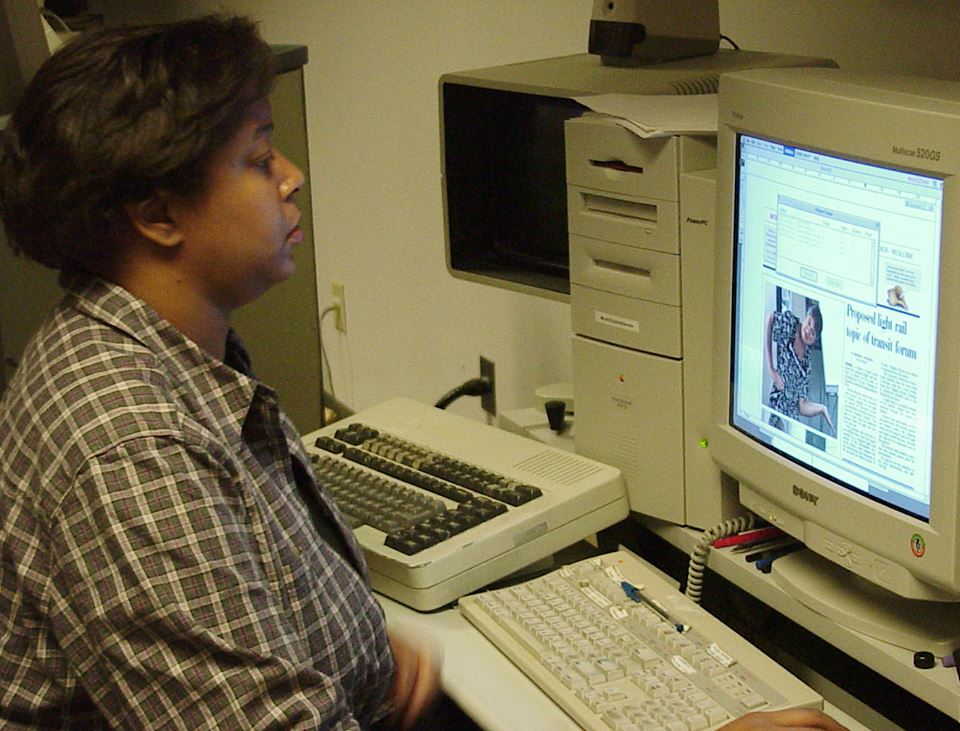
Section fronts and color pages at The Virginian-Pilot were designed using Macintosh computers with Quark XPress (this was before all publishing systems were replaced by DTI). (Photo by Randy Jessee).
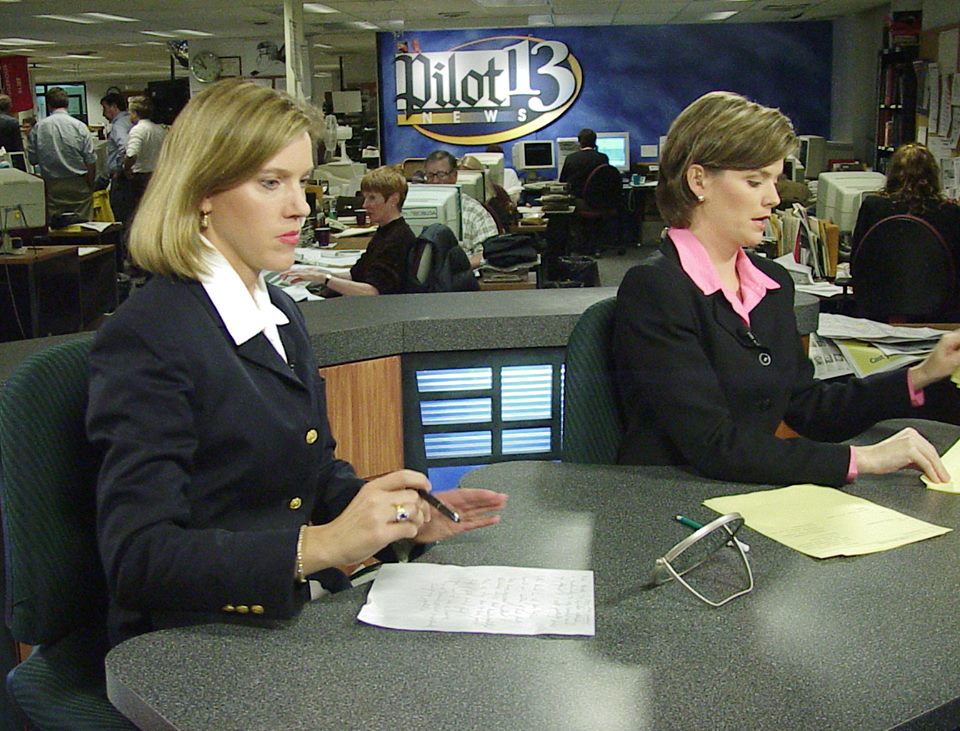
The Virginian-Pilot was a partner with local TV station WVEC. Nightly newscasts originated from the Pilot’s newsroom. (Photo by Randy Jessee).
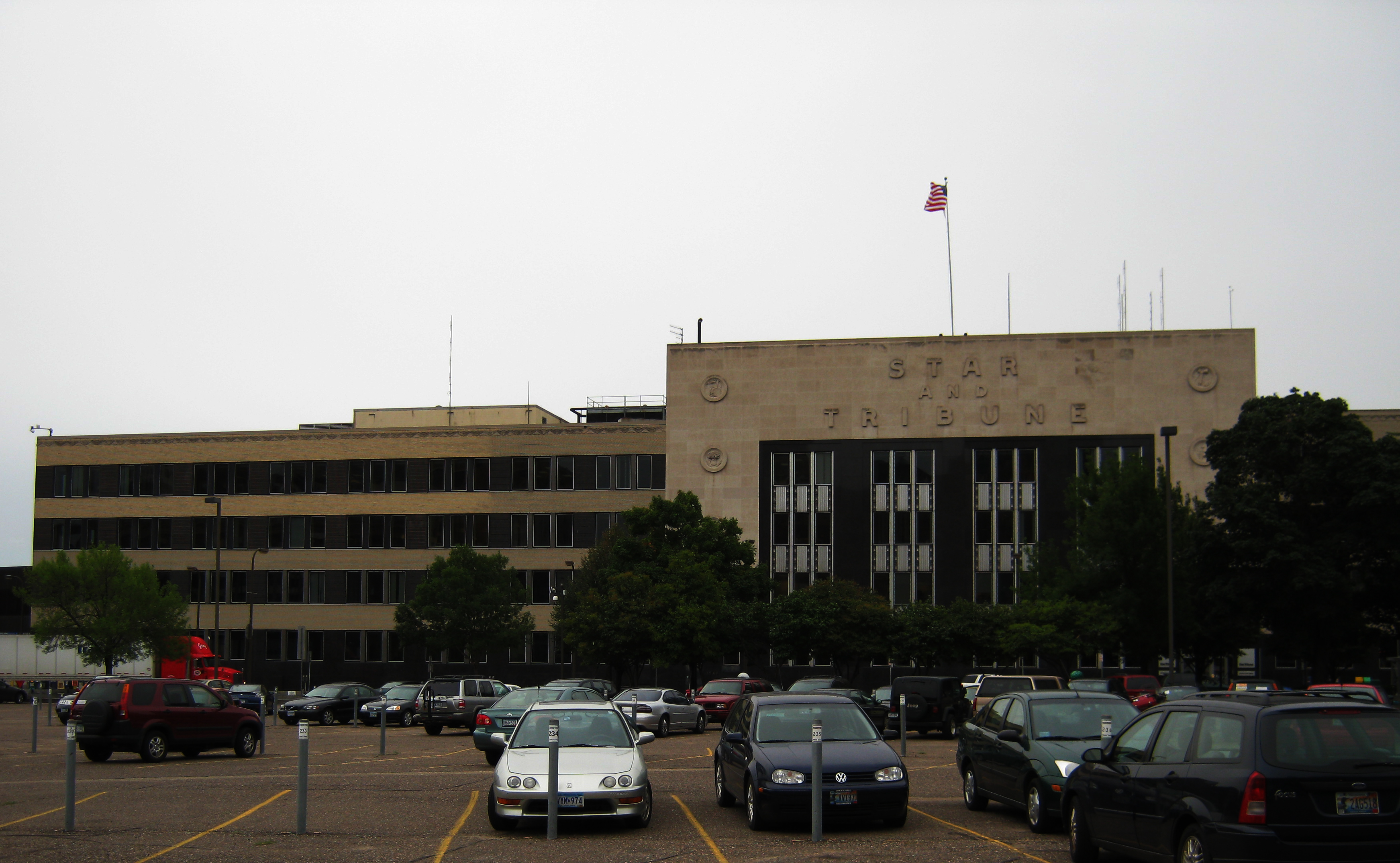
The Minneapolis Star-Tribune where I spent some time with the DTI sales team to present our latest software offerings.


